10 of the most impressive superyachts owned by billionaires
From a sailing yacht owned by a russian billionaire industrialist to the luxury launch of the patek philippe ceo, here are the best billionaire-owned boats on the water….
Words: Jonathan Wells
There’s something about billionaires and big boats . Whether they’re superyachts or megayachts, men with money love to splash out on these sizeable sea-going giants. And that all began in 1954 — with the big dreams of Greek shipping magnate Aristotle Onassis.
Onassis, keen to keep his luxury lifestyle afloat when at sea, bought Canadian anti-submarine frigate HMCS Stormont after World War II. He spent millions turning it into an opulent super yacht, named it after his daughter — and the Christina O kicked off a trend among tycoons. To this day, the world’s richest men remain locked in an arms race to build the biggest, fastest, most impressive superyacht of all. Here are 10 of our favourites…

Eclipse, owned by Roman Abramovich

Built by: Blohm+Voss of Hamburg, with interiors and exteriors designed by Terence Disdale. Launched in 2009, it cost $500 million (the equivalent of £623 million today).
Owned by: Russian businessman Roman Abramovich, the owner of private investment company Millhouse LLC and owner of Chelsea Football Club. His current net worth is $17.4 billion.
Key features: 162.5 metres in length / 9 decks / Top speed of 22 knots / Two swimming pools / Disco hall / Mini submarine / 2 helicopter pads / 24 guest cabins
Sailing Yacht A, owned by Andrey Melnichenko
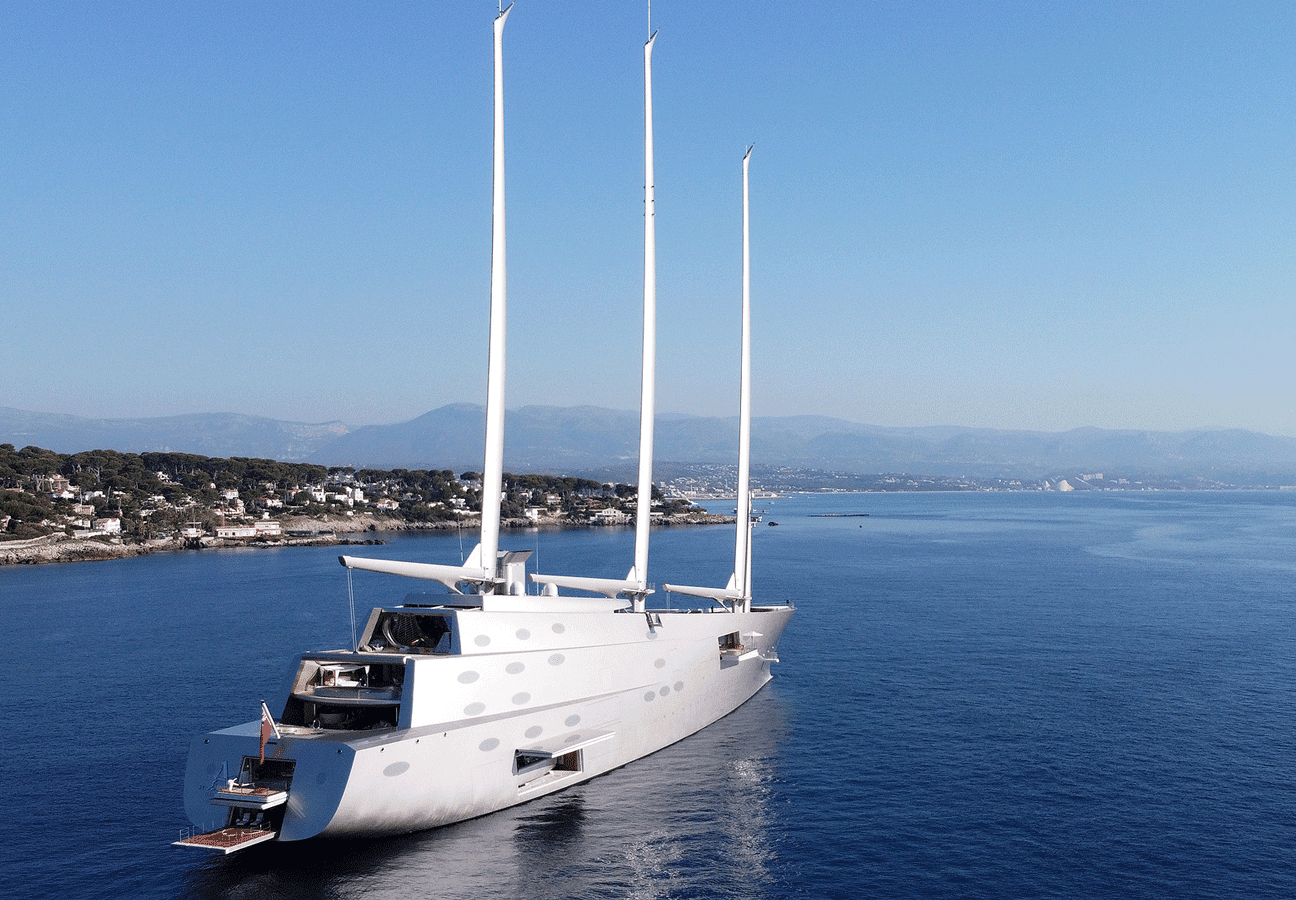
Built by: Nobiskrug, a shipyard on the Eider River in Germany. The original idea came from Jacques Garcia, with interiors designed by Philippe Starck and a reported price tag of over $400 million.
Owned by: Russian billionaire industrialist Andrey Melnichenko, the main beneficiary of both the fertiliser producing EuroChem Group and the coal energy company SUEK. Though his current net worth is $18.7 billion, Sailing Yacht A was seized in Trieste on 12 March 2022 due to the EU’s sanctions on Russian businessmen.
Key features: 119 metres in length / 8 decks / Top speed of 21 knots / Freestanding carbon-fibre rotating masts / Underwater observation pod / 14 guests
Symphony, owned by Bernard Arnault

Built by: Feadship, the fabled shipyard headquartered in Haarlem in The Netherlands. With an exterior designed by Tim Heywood, it reportedly cost around $150 million to construct.
Owned by: French billionaire businessman and art collector Bernard Arnault. Chairman and chief executive of LVMH, the world’s largest luxury goods company, his current net worth is $145.8 billion.
Key features: 101.5 metres in length / 6 decks / Top speed of 22 knots / 6-metre glass-bottom swimming pool / Outdoor cinema / Sundeck Jacuzzi / 8 guest cabins
Faith, owned by Michael Latifi

Built by: Similarly to Symphony above, also Feadship. With exteriors designed by Beaulieu-based RWD, and interiors by Chahan Design, it cost a reported $200 million to construct in 2017.
Owned by: Until recently, Canadian billionaire and part-owner of the Aston Martin Formula 1 Team , Lawrence Stroll. Recently sold to Michael Latifi, father of F1 star Nicholas , a fellow Canadian businessman with a net worth of just under $2 billion.
Key features: 97 metres in length / 9 guest cabins / Glass-bottom swimming pool — with bar / Bell 429 helicopter
Amevi, owned by Lakshmi Mittal

Built by: The Oceanco shipyard, also in The Netherlands. With exterior design by Nuvolari & Lenard and interior design by Alberto Pinto, it launched in 2007 (and cost around $125 million to construct).
Owned by: Indian steel magnate Lakshmi Mittal, chairman and CEO of Arcelor Mittal, the world’s largest steelmaking company. He owns 20% of Queen Park Rangers, and has a net worth of $18 billion.
Key features: 80 metres in length / 6 decks / Top speed of 18.5 knots / On-deck Jacuzzi / Helipad / Swimming Pool / Tender Garage / 8 guest cabins
Odessa II, owned by Len Blavatnik
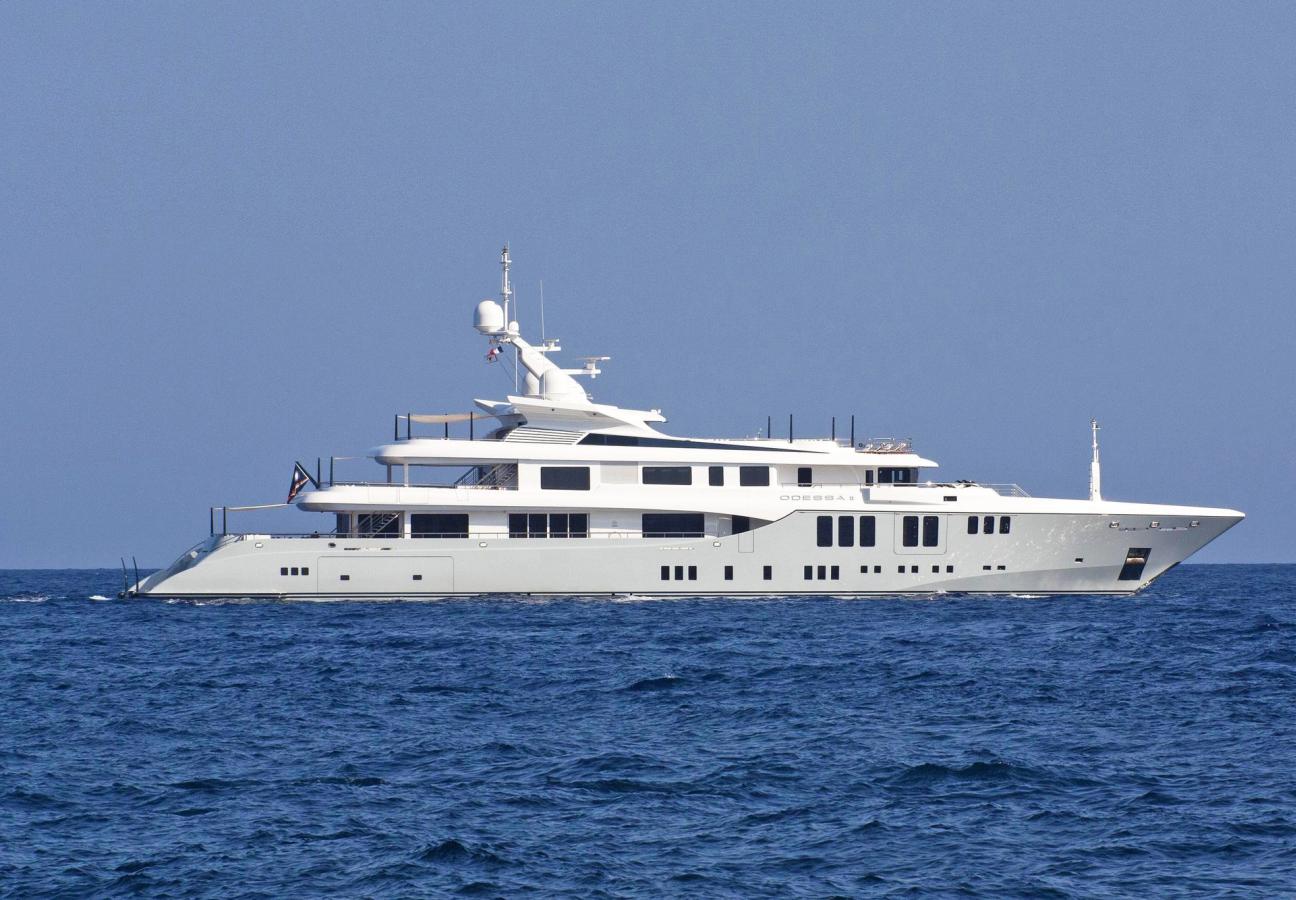
Built by: Nobiskrug, the same German shipyard that built Sailing Yacht A . Both interior and exterior were created by Focus Yacht Design, and the yacht was launched in 2013 with a cost of $80 million.
Owned by: British businessman Sir Leonard Blavatnik. Founder of Access Industries — a multinational industrial group with current holdings in Warner Music Group, Spotify and the Grand-Hôtel du Cap-Ferrat — he is worth $39.9 billion.
Key features: 74 metres in length / 6 guest cabins / Top speed of 18 knots / Intimate beach club / Baby grand piano / Private master cabhin terrace / Outdoor cinema
Nautilus, owned by Thierry Stern

Built by: Italian shipyard Perini Navi in 2014. With interiors by Rémi Tessier and exterior design by Philippe Briand, Nautilus was estimated to cost around $90 million to construct.
Owned by: Patek Philippe CEO Thierry Stern. Alongside his Gulstream G650 private jet, Nautilus — named for the famous sports watch — is his most costly mode of transport. His current net worth is $3 billion.
Key features: 73 metres in length / 7 guest cabins / Top speed of 16.5 knots / Dedicated wellness deck / 3.5 metre resistance pool / Underfloor heating / Jet Skis
Silver Angel, owned by Richard Caring

Built by: Luxury Italian boatbuilder Benetti. Launched in 2009, the yacht’s interior has been designed by Argent Design and her exterior styling is by Stefano Natucci.
Owned by: Richard Caring, British businessman and multi-millionaire (his wealth peaked at £1.05 billion, so he still makes the cut). Chairman of Caprice Holdings, he owns The Ivy restaurants.
Key features: 64.5 metres in length / Cruising speed of 15 knots / 7 guest cabins / Lalique decor / 5 decks / Oval Jacuzzi pool / Sun deck bar / Aft deck dining table
Lady Beatrice, owned by Frederick Barclay
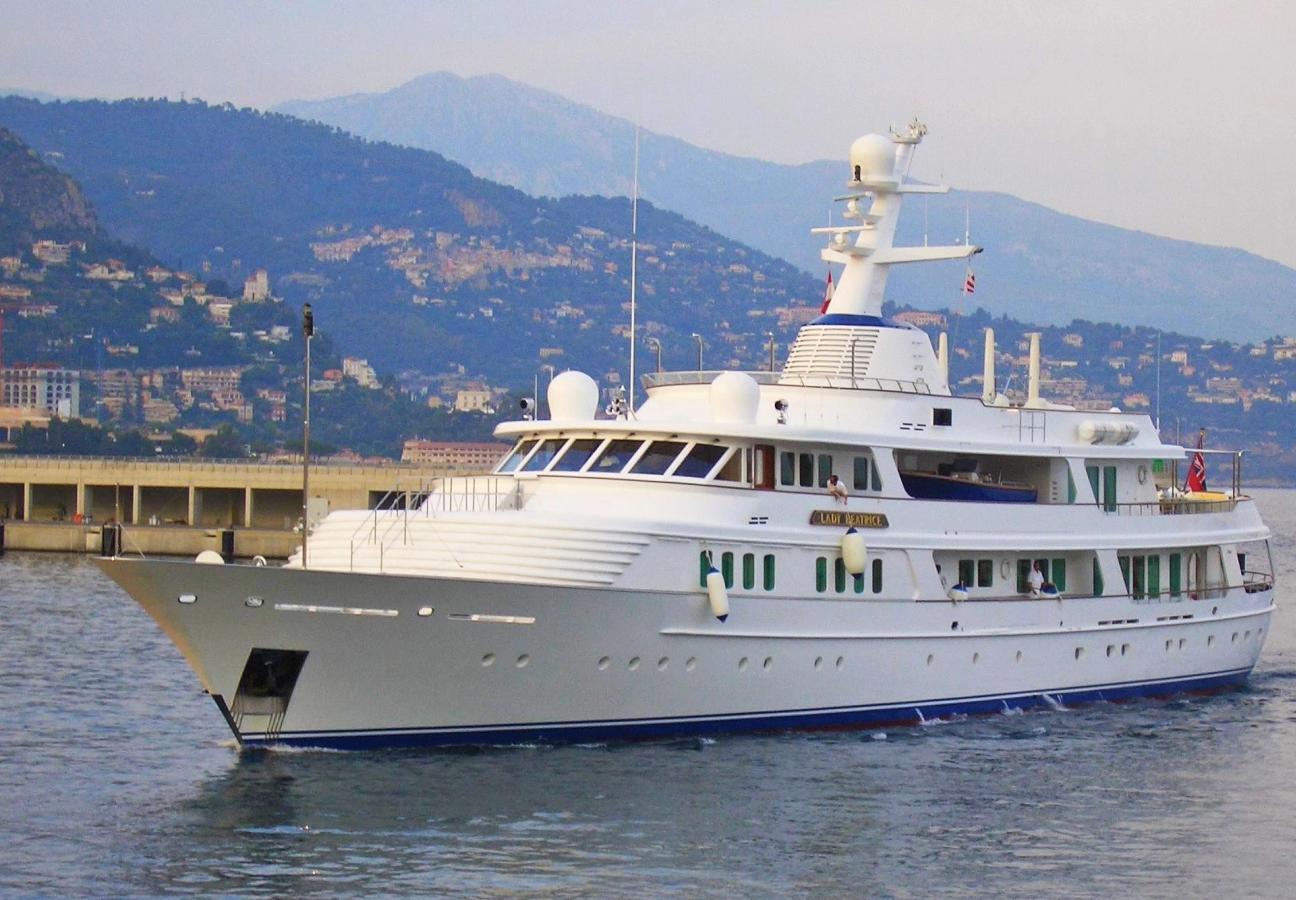
Built by: Feadship and Royal Van Lent in 1993. Exteriors were created by De Voogt Naval Architects, with interiors by Bannenberg Designs. She cost the equivalent of £63 million to build.
Owned by: Sir David Barclay and his late brother Sir Frederick. The ‘Barclay Brothers’ had joint business pursuits including The Spectator , The Telegraph and delivery company Yodel. Current net worth: £7 billion.
Key features: 60 metres in length / 18 knots maximum speed / Monaco home port / Named for the brothers’ mother, Beatrice Cecelia Taylor / 8 guest cabins
Space, owned by Laurence Graff

Built by: Space was the first in Feadship’s F45 Vantage series , styled by Sinot Exclusive Yacht Design and launched in 2007. She cost a reported $25 million to construct.
Owned by: Laurence Graff, English jeweller and billionaire businessman. As the founder of Graff Diamonds, he has a global business presence and a current net worth of $6.26 billion.
Key features: 45 metres in length / Top speed of 16 knots / Al fresco dining area / Sun deck Jacuzzi / Breakfast bar / Swimming platform / Steam room
Want more yachts? Here’s the handcradfted, homegrown history of Princess…
Become a Gentleman’s Journal member. Find out more here.

Become a Gentleman’s Journal Member?
Like the Gentleman’s Journal? Why not join the Clubhouse, a special kind of private club where members receive offers and experiences from hand-picked, premium brands. You will also receive invites to exclusive events, the quarterly print magazine delivered directly to your door and your own membership card.
Further reading

The best webcams to up level up your Zoom meetings
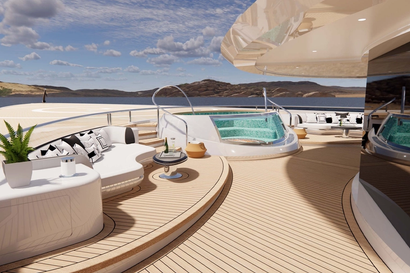
All you need to know about Kismet, the new £2.5m a week gigayacht
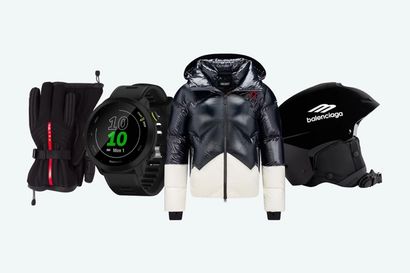
The best slope-worthy ski gear on the planet
Find anything you save across the site in your account
The Haves and the Have-Yachts
By Evan Osnos
In the Victorian era, it was said that the length of a man’s boat, in feet, should match his age, in years. The Victorians would have had some questions at the fortieth annual Palm Beach International Boat Show, which convened this March on Florida’s Gold Coast. A typical offering: a two-hundred-and-three-foot superyacht named Sea Owl, selling secondhand for ninety million dollars. The owner, Robert Mercer, the hedge-fund tycoon and Republican donor, was throwing in furniture and accessories, including several auxiliary boats, a Steinway piano, a variety of frescoes, and a security system that requires fingerprint recognition. Nevertheless, Mercer’s package was a modest one; the largest superyachts are more than five hundred feet, on a scale with naval destroyers, and cost six or seven times what he was asking.
For the small, tight-lipped community around the world’s biggest yachts, the Palm Beach show has the promising air of spring training. On the cusp of the summer season, it affords brokers and builders and owners (or attendants from their family offices) a chance to huddle over the latest merchandise and to gather intelligence: Who’s getting in? Who’s getting out? And, most pressingly, who’s ogling a bigger boat?
On the docks, brokers parse the crowd according to a taxonomy of potential. Guests asking for tours face a gantlet of greeters, trained to distinguish “superrich clients” from “ineligible visitors,” in the words of Emma Spence, a former greeter at the Palm Beach show. Spence looked for promising clues (the right shoes, jewelry, pets) as well as for red flags (cameras, ornate business cards, clothes with pop-culture references). For greeters from elsewhere, Palm Beach is a challenging assignment. Unlike in Europe, where money can still produce some visible tells—Hunter Wellies, a Barbour jacket—the habits of wealth in Florida offer little that’s reliable. One colleague resorted to binoculars, to spot a passerby with a hundred-thousand-dollar watch. According to Spence, people judged to have insufficient buying power are quietly marked for “dissuasion.”
For the uninitiated, a pleasure boat the length of a football field can be bewildering. Andy Cohen, the talk-show host, recalled his first visit to a superyacht owned by the media mogul Barry Diller: “I was like the Beverly Hillbillies.” The boats have grown so vast that some owners place unique works of art outside the elevator on each deck, so that lost guests don’t barge into the wrong stateroom.
At the Palm Beach show, I lingered in front of a gracious vessel called Namasté, until I was dissuaded by a wooden placard: “Private yacht, no boarding, no paparazzi.” In a nearby berth was a two-hundred-and-eighty-foot superyacht called Bold, which was styled like a warship, with its own helicopter hangar, three Sea-Doos, two sailboats, and a color scheme of gunmetal gray. The rugged look is a trend; “explorer” vessels, equipped to handle remote journeys, are the sport-utility vehicles of yachting.
If you hail from the realm of ineligible visitors, you may not be aware that we are living through the “greatest boom in the yacht business that’s ever existed,” as Bob Denison—whose firm, Denison Yachting, is one of the world’s largest brokers—told me. “Every broker, every builder, up and down the docks, is having some of the best years they’ve ever experienced.” In 2021, the industry sold a record eight hundred and eighty-seven superyachts worldwide, nearly twice the previous year’s total. With more than a thousand new superyachts on order, shipyards are so backed up that clients unaccustomed to being told no have been shunted to waiting lists.
One reason for the increased demand for yachts is the pandemic. Some buyers invoke social distancing; others, an existential awakening. John Staluppi, of Palm Beach Gardens, who made a fortune from car dealerships, is looking to upgrade from his current, sixty-million-dollar yacht. “When you’re forty or fifty years old, you say, ‘I’ve got plenty of time,’ ” he told me. But, at seventy-five, he is ready to throw in an extra fifteen million if it will spare him three years of waiting. “Is your life worth five million dollars a year? I think so,” he said. A deeper reason for the demand is the widening imbalance of wealth. Since 1990, the United States’ supply of billionaires has increased from sixty-six to more than seven hundred, even as the median hourly wage has risen only twenty per cent. In that time, the number of truly giant yachts—those longer than two hundred and fifty feet—has climbed from less than ten to more than a hundred and seventy. Raphael Sauleau, the C.E.O. of Fraser Yachts, told me bluntly, “ COVID and wealth—a perfect storm for us.”
And yet the marina in Palm Beach was thrumming with anxiety. Ever since the Russian President, Vladimir Putin, launched his assault on Ukraine, the superyacht world has come under scrutiny. At a port in Spain, a Ukrainian engineer named Taras Ostapchuk, working aboard a ship that he said was owned by a Russian arms dealer, threw open the sea valves and tried to sink it to the bottom of the harbor. Under arrest, he told a judge, “I would do it again.” Then he returned to Ukraine and joined the military. Western allies, in the hope of pressuring Putin to withdraw, have sought to cut off Russian oligarchs from businesses and luxuries abroad. “We are coming for your ill-begotten gains,” President Joe Biden declared, in his State of the Union address.
Nobody can say precisely how many of Putin’s associates own superyachts—known to professionals as “white boats”—because the white-boat world is notoriously opaque. Owners tend to hide behind shell companies, registered in obscure tax havens, attended by private bankers and lawyers. But, with unusual alacrity, authorities have used subpoenas and police powers to freeze boats suspected of having links to the Russian élite. In Spain, the government detained a hundred-and-fifty-million-dollar yacht associated with Sergei Chemezov, the head of the conglomerate Rostec, whose bond with Putin reaches back to their time as K.G.B. officers in East Germany. (As in many cases, the boat is not registered to Chemezov; the official owner is a shell company connected to his stepdaughter, a teacher whose salary is likely about twenty-two hundred dollars a month.) In Germany, authorities impounded the world’s most voluminous yacht, Dilbar, for its ties to the mining-and-telecom tycoon Alisher Usmanov. And in Italy police have grabbed a veritable armada, including a boat owned by one of Russia’s richest men, Alexei Mordashov, and a colossus suspected of belonging to Putin himself, the four-hundred-and-fifty-nine-foot Scheherazade.
In Palm Beach, the yachting community worried that the same scrutiny might be applied to them. “Say your superyacht is in Asia, and there’s some big conflict where China invades Taiwan,” Denison told me. “China could spin it as ‘Look at these American oligarchs!’ ” He wondered if the seizures of superyachts marked a growing political animus toward the very rich. “Whenever things are economically or politically disruptive,” he said, “it’s hard to justify taking an insane amount of money and just putting it into something that costs a lot to maintain, depreciates, and is only used for having a good time.”
Nobody pretends that a superyacht is a productive place to stash your wealth. In a column this spring headlined “ A SUPERYACHT IS A TERRIBLE ASSET ,” the Financial Times observed, “Owning a superyacht is like owning a stack of 10 Van Goghs, only you are holding them over your head as you tread water, trying to keep them dry.”
Not so long ago, status transactions among the élite were denominated in Old Masters and in the sculptures of the Italian Renaissance. Joseph Duveen, the dominant art dealer of the early twentieth century, kept the oligarchs of his day—Andrew Mellon, Jules Bache, J. P. Morgan—jockeying over Donatellos and Van Dycks. “When you pay high for the priceless,” he liked to say, “you’re getting it cheap.”

Link copied
In the nineteen-fifties, the height of aspirational style was fine French furniture—F.F.F., as it became known in certain precincts of Fifth Avenue and Palm Beach. Before long, more and more money was going airborne. Hugh Hefner, a pioneer in the private-jet era, decked out a plane he called Big Bunny, where he entertained Elvis Presley, Raquel Welch, and James Caan. The oil baron Armand Hammer circled the globe on his Boeing 727, paying bribes and recording evidence on microphones hidden in his cufflinks. But, once it seemed that every plutocrat had a plane, the thrill was gone.
In any case, an airplane is just transportation. A big ship is a floating manse, with a hierarchy written right into the nomenclature. If it has a crew working aboard, it’s a yacht. If it’s more than ninety-eight feet, it’s a superyacht. After that, definitions are debated, but people generally agree that anything more than two hundred and thirty feet is a megayacht, and more than two hundred and ninety-five is a gigayacht. The world contains about fifty-four hundred superyachts, and about a hundred gigayachts.
For the moment, a gigayacht is the most expensive item that our species has figured out how to own. In 2019, the hedge-fund billionaire Ken Griffin bought a quadruplex on Central Park South for two hundred and forty million dollars, the highest price ever paid for a home in America. In May, an unknown buyer spent about a hundred and ninety-five million on an Andy Warhol silk-screen portrait of Marilyn Monroe. In luxury-yacht terms, those are ordinary numbers. “There are a lot of boats in build well over two hundred and fifty million dollars,” Jamie Edmiston, a broker in Monaco and London, told me. His buyers are getting younger and more inclined to spend long stretches at sea. “High-speed Internet, telephony, modern communications have made working easier,” he said. “Plus, people made a lot more money earlier in life.”
A Silicon Valley C.E.O. told me that one appeal of boats is that they can “absorb the most excess capital.” He explained, “Rationally, it would seem to make sense for people to spend half a billion dollars on their house and then fifty million on the boat that they’re on for two weeks a year, right? But it’s gone the other way. People don’t want to live in a hundred-thousand-square-foot house. Optically, it’s weird. But a half-billion-dollar boat, actually, is quite nice.” Staluppi, of Palm Beach Gardens, is content to spend three or four times as much on his yachts as on his homes. Part of the appeal is flexibility. “If you’re on your boat and you don’t like your neighbor, you tell the captain, ‘Let’s go to a different place,’ ” he said. On land, escaping a bad neighbor requires more work: “You got to try and buy him out or make it uncomfortable or something.” The preference for sea-based investment has altered the proportions of taste. Until recently, the Silicon Valley C.E.O. said, “a fifty-metre boat was considered a good-sized boat. Now that would be a little bit embarrassing.” In the past twenty years, the length of the average luxury yacht has grown by a third, to a hundred and sixty feet.
Thorstein Veblen, the economist who published “The Theory of the Leisure Class,” in 1899, argued that the power of “conspicuous consumption” sprang not from artful finery but from sheer needlessness. “In order to be reputable,” he wrote, “it must be wasteful.” In the yachting world, stories circulate about exotic deliveries by helicopter or seaplane: Dom Pérignon, bagels from Zabar’s, sex workers, a rare melon from the island of Hokkaido. The industry excels at selling you things that you didn’t know you needed. When you flip through the yachting press, it’s easy to wonder how you’ve gone this long without a personal submarine, or a cryosauna that “blasts you with cold” down to minus one hundred and ten degrees Celsius, or the full menagerie of “exclusive leathers,” such as eel and stingray.
But these shrines to excess capital exist in a conditional state of visibility: they are meant to be unmistakable to a slender stratum of society—and all but unseen by everyone else. Even before Russia’s invasion of Ukraine, the yachting community was straining to manage its reputation as a gusher of carbon emissions (one well-stocked diesel yacht is estimated to produce as much greenhouse gas as fifteen hundred passenger cars), not to mention the fact that the world of white boats is overwhelmingly white. In a candid aside to a French documentarian, the American yachtsman Bill Duker said, “If the rest of the world learns what it’s like to live on a yacht like this, they’re gonna bring back the guillotine.” The Dutch press recently reported that Jeff Bezos, the founder of Amazon, was building a sailing yacht so tall that the city of Rotterdam might temporarily dismantle a bridge that had survived the Nazis in order to let the boat pass to the open sea. Rotterdammers were not pleased. On Facebook, a local man urged people to “take a box of rotten eggs with you and let’s throw them en masse at Jeff’s superyacht when it sails through.” At least thirteen thousand people expressed interest. Amid the uproar, a deputy mayor announced that the dismantling plan had been abandoned “for the time being.” (Bezos modelled his yacht partly on one owned by his friend Barry Diller, who has hosted him many times. The appreciation eventually extended to personnel, and Bezos hired one of Diller’s captains.)
As social media has heightened the scrutiny of extraordinary wealth, some of the very people who created those platforms have sought less observable places to spend it. But they occasionally indulge in some coded provocation. In 2006, when the venture capitalist Tom Perkins unveiled his boat in Istanbul, most passersby saw it adorned in colorful flags, but people who could read semaphore were able to make out a message: “Rarely does one have the privilege to witness vulgar ostentation displayed on such a scale.” As a longtime owner told me, “If you don’t have some guilt about it, you’re a rat.”
Alex Finley, a former C.I.A. officer who has seen yachts proliferate near her home in Barcelona, has weighed the superyacht era and its discontents in writings and on Twitter, using the hashtag #YachtWatch. “To me, the yachts are not just yachts,” she told me. “In Russia’s case, these are the embodiment of oligarchs helping a dictator destabilize our democracy while utilizing our democracy to their benefit.” But, Finley added, it’s a mistake to think the toxic symbolism applies only to Russia. “The yachts tell a whole story about a Faustian capitalism—this idea that we’re ready to sell democracy for short-term profit,” she said. “They’re registered offshore. They use every loophole that we’ve put in place for illicit money and tax havens. So they play a role in this battle, writ large, between autocracy and democracy.”
After a morning on the docks at the Palm Beach show, I headed to a more secluded marina nearby, which had been set aside for what an attendant called “the really big hardware.” It felt less like a trade show than like a boutique resort, with a swimming pool and a terrace restaurant. Kevin Merrigan, a relaxed Californian with horn-rimmed glasses and a high forehead pinked by the sun, was waiting for me at the stern of Unbridled, a superyacht with a brilliant blue hull that gave it the feel of a personal cruise ship. He invited me to the bridge deck, where a giant screen showed silent video of dolphins at play.
Merrigan is the chairman of the brokerage Northrop & Johnson, which has ridden the tide of growing boats and wealth since 1949. Lounging on a sofa mounded with throw pillows, he projected a nearly postcoital level of contentment. He had recently sold the boat we were on, accepted an offer for a behemoth beside us, and begun negotiating the sale of yet another. “This client owns three big yachts,” he said. “It’s a hobby for him. We’re at a hundred and ninety-one feet now, and last night he said, ‘You know, what do you think about getting a two hundred and fifty?’ ” Merrigan laughed. “And I was, like, ‘Can’t you just have dinner?’ ”
Among yacht owners, there are some unwritten rules of stratification: a Dutch-built boat will hold its value better than an Italian; a custom design will likely get more respect than a “series yacht”; and, if you want to disparage another man’s boat, say that it looks like a wedding cake. But, in the end, nothing says as much about a yacht, or its owner, as the delicate matter of L.O.A.—length over all.
The imperative is not usually length for length’s sake (though the longtime owner told me that at times there is an aspect of “phallic sizing”). “L.O.A.” is a byword for grandeur. In most cases, pleasure yachts are permitted to carry no more than twelve passengers, a rule set by the International Convention for the Safety of Life at Sea, which was conceived after the sinking of the Titanic. But those limits do not apply to crew. “So, you might have anything between twelve and fifty crew looking after those twelve guests,” Edmiston, the broker, said. “It’s a level of service you cannot really contemplate until you’ve been fortunate enough to experience it.”
As yachts have grown more capacious, and the limits on passengers have not, more and more space on board has been devoted to staff and to novelties. The latest fashions include IMAX theatres, hospital equipment that tests for dozens of pathogens, and ski rooms where guests can suit up for a helicopter trip to a mountaintop. The longtime owner, who had returned the previous day from his yacht, told me, “No one today—except for assholes and ridiculous people—lives on land in what you would call a deep and broad luxe life. Yes, people have nice houses and all of that, but it’s unlikely that the ratio of staff to them is what it is on a boat.” After a moment, he added, “Boats are the last place that I think you can get away with it.”
Even among the truly rich, there is a gap between the haves and the have-yachts. One boating guest told me about a conversation with a famous friend who keeps one of the world’s largest yachts. “He said, ‘The boat is the last vestige of what real wealth can do.’ What he meant is, You have a chef, and I have a chef. You have a driver, and I have a driver. You can fly privately, and I fly privately. So, the one place where I can make clear to the world that I am in a different fucking category than you is the boat.”
After Merrigan and I took a tour of Unbridled, he led me out to a waiting tender, staffed by a crew member with an earpiece on a coil. The tender, Merrigan said, would ferry me back to the busy main dock of the Palm Beach show. We bounced across the waves under a pristine sky, and pulled into the marina, where my fellow-gawkers were still trying to talk their way past the greeters. As I walked back into the scrum, Namasté was still there, but it looked smaller than I remembered.
For owners and their guests, a white boat provides a discreet marketplace for the exchange of trust, patronage, and validation. To diagram the precise workings of that trade—the customs and anxieties, strategies and slights—I talked to Brendan O’Shannassy, a veteran captain who is a curator of white-boat lore. Raised in Western Australia, O’Shannassy joined the Navy as a young man, and eventually found his way to skippering some of the world’s biggest yachts. He has worked for Paul Allen, the late co-founder of Microsoft, along with a few other billionaires he declines to name. Now in his early fifties, with patient green eyes and tufts of curly brown hair, O’Shannassy has had a vantage from which to monitor the social traffic. “It’s all gracious, and everyone’s kiss-kiss,” he said. “But there’s a lot going on in the background.”
O’Shannassy once worked for an owner who limited the number of newspapers on board, so that he could watch his guests wait and squirm. “It was a mind game amongst the billionaires. There were six couples, and three newspapers,” he said, adding, “They were ranking themselves constantly.” On some boats, O’Shannassy has found himself playing host in the awkward minutes after guests arrive. “A lot of them are savants, but some are very un-socially aware,” he said. “They need someone to be social and charming for them.” Once everyone settles in, O’Shannassy has learned, there is often a subtle shift, when a mogul or a politician or a pop star starts to loosen up in ways that are rarely possible on land. “Your security is relaxed—they’re not on your hip,” he said. “You’re not worried about paparazzi. So you’ve got all this extra space, both mental and physical.”
O’Shannassy has come to see big boats as a space where powerful “solar systems” converge and combine. “It is implicit in every interaction that their sharing of information will benefit both parties; it is an obsession with billionaires to do favours for each other. A referral, an introduction, an insight—it all matters,” he wrote in “Superyacht Captain,” a new memoir. A guest told O’Shannassy that, after a lavish display of hospitality, he finally understood the business case for buying a boat. “One deal secured on board will pay it all back many times over,” the guest said, “and it is pretty hard to say no after your kids have been hosted so well for a week.”
Take the case of David Geffen, the former music and film executive. He is long retired, but he hosts friends (and potential friends) on the four-hundred-and-fifty-four-foot Rising Sun, which has a double-height cinema, a spa and salon, and a staff of fifty-seven. In 2017, shortly after Barack and Michelle Obama departed the White House, they were photographed on Geffen’s boat in French Polynesia, accompanied by Bruce Springsteen, Oprah Winfrey, Tom Hanks, and Rita Wilson. For Geffen, the boat keeps him connected to the upper echelons of power. There are wealthier Americans, but not many of them have a boat so delectable that it can induce both a Democratic President and the workingman’s crooner to risk the aroma of hypocrisy.
The binding effect pays dividends for guests, too. Once people reach a certain level of fame, they tend to conclude that its greatest advantage is access. Spend a week at sea together, lingering over meals, observing one another floundering on a paddleboard, and you have something of value for years to come. Call to ask for an investment, an introduction, an internship for a wayward nephew, and you’ll at least get the call returned. It’s a mutually reinforcing circle of validation: she’s here, I’m here, we’re here.
But, if you want to get invited back, you are wise to remember your part of the bargain. If you work with movie stars, bring fresh gossip. If you’re on Wall Street, bring an insight or two. Don’t make the transaction obvious, but don’t forget why you’re there. “When I see the guest list,” O’Shannassy wrote, “I am aware, even if not all names are familiar, that all have been chosen for a purpose.”
For O’Shannassy, there is something comforting about the status anxieties of people who have everything. He recalled a visit to the Italian island of Sardinia, where his employer asked him for a tour of the boats nearby. Riding together on a tender, they passed one colossus after another, some twice the size of the owner’s superyacht. Eventually, the man cut the excursion short. “Take me back to my yacht, please,” he said. They motored in silence for a while. “There was a time when my yacht was the most beautiful in the bay,” he said at last. “How do I keep up with this new money?”
The summer season in the Mediterranean cranks up in May, when the really big hardware heads east from Florida and the Caribbean to escape the coming hurricanes, and reconvenes along the coasts of France, Italy, and Spain. At the center is the Principality of Monaco, the sun-washed tax haven that calls itself the “world’s capital of advanced yachting.” In Monaco, which is among the richest countries on earth, superyachts bob in the marina like bath toys.

The nearest hotel room at a price that would not get me fired was an Airbnb over the border with France. But an acquaintance put me on the phone with the Yacht Club de Monaco, a members-only establishment created by the late monarch His Serene Highness Prince Rainier III, whom the Web site describes as “a true visionary in every respect.” The club occasionally rents rooms—“cabins,” as they’re called—to visitors in town on yacht-related matters. Claudia Batthyany, the elegant director of special projects, showed me to my cabin and later explained that the club does not aspire to be a hotel. “We are an association ,” she said. “Otherwise, it becomes”—she gave a gentle wince—“not that exclusive.”
Inside my cabin, I quickly came to understand that I would never be fully satisfied anywhere else again. The space was silent and aromatically upscale, bathed in soft sunlight that swept through a wall of glass overlooking the water. If I was getting a sudden rush of the onboard experience, that was no accident. The clubhouse was designed by the British architect Lord Norman Foster to evoke the opulent indulgence of ocean liners of the interwar years, like the Queen Mary. I found a handwritten welcome note, on embossed club stationery, set alongside an orchid and an assemblage of chocolate truffles: “The whole team remains at your entire disposal to make your stay a wonderful experience. Yours sincerely, Service Members.” I saluted the nameless Service Members, toiling for the comfort of their guests. Looking out at the water, I thought, intrusively, of a line from Santiago, Hemingway’s old man of the sea. “Do not think about sin,” he told himself. “It is much too late for that and there are people who are paid to do it.”
I had been assured that the Service Members would cheerfully bring dinner, as they might on board, but I was eager to see more of my surroundings. I consulted the club’s summer dress code. It called for white trousers and a blue blazer, and it discouraged improvisation: “No pocket handkerchief is to be worn above the top breast-pocket bearing the Club’s coat of arms.” The handkerchief rule seemed navigable, but I did not possess white trousers, so I skirted the lobby and took refuge in the bar. At a table behind me, a man with flushed cheeks and a British accent had a head start. “You’re a shitty negotiator,” he told another man, with a laugh. “Maybe sales is not your game.” A few seats away, an American woman was explaining to a foreign friend how to talk with conservatives: “If they say, ‘The earth is flat,’ you say, ‘Well, I’ve sailed around it, so I’m not so sure about that.’ ”
In the morning, I had an appointment for coffee with Gaëlle Tallarida, the managing director of the Monaco Yacht Show, which the Daily Mail has called the “most shamelessly ostentatious display of yachts in the world.” Tallarida was not born to that milieu; she grew up on the French side of the border, swimming at public beaches with a view of boats sailing from the marina. But she had a knack for highly organized spectacle. While getting a business degree, she worked on a student theatre festival and found it thrilling. Afterward, she got a job in corporate events, and in 1998 she was hired at the yacht show as a trainee.
With this year’s show five months off, Tallarida was already getting calls about what she described as “the most complex part of my work”: deciding which owners get the most desirable spots in the marina. “As you can imagine, they’ve got very big egos,” she said. “On top of that, I’m a woman. They are sometimes arriving and saying”—she pointed into the distance, pantomiming a decree—“ ‘O.K., I want that! ’ ”
Just about everyone wants his superyacht to be viewed from the side, so that its full splendor is visible. Most harbors, however, have a limited number of berths with a side view; in Monaco, there are only twelve, with prime spots arrayed along a concrete dike across from the club. “We reserve the dike for the biggest yachts,” Tallarida said. But try telling that to a man who blew his fortune on a small superyacht.
Whenever possible, Tallarida presents her verdicts as a matter of safety: the layout must insure that “in case of an emergency, any boat can go out.” If owners insist on preferential placement, she encourages a yachting version of the Golden Rule: “What if, next year, I do that to you? Against you?”
Does that work? I asked. She shrugged. “They say, ‘Eh.’ ” Some would gladly risk being a victim next year in order to be a victor now. In the most awful moment of her career, she said, a man who was unhappy with his berth berated her face to face. “I was in the office, feeling like a little girl, with my daddy shouting at me. I said, ‘O.K., O.K., I’m going to give you the spot.’ ”
Securing just the right place, it must be said, carries value. Back at the yacht club, I was on my terrace, enjoying the latest delivery by the Service Members—an airy French omelette and a glass of preternaturally fresh orange juice. I thought guiltily of my wife, at home with our kids, who had sent a text overnight alerting me to a maintenance issue that she described as “a toilet debacle.”
Then I was distracted by the sight of a man on a yacht in the marina below. He was staring up at me. I went back to my brunch, but, when I looked again, there he was—a middle-aged man, on a mid-tier yacht, juiceless, on a greige banquette, staring up at my perfect terrace. A surprising sensation started in my chest and moved outward like a warm glow: the unmistakable pang of superiority.
That afternoon, I made my way to the bar, to meet the yacht club’s general secretary, Bernard d’Alessandri, for a history lesson. The general secretary was up to code: white trousers, blue blazer, club crest over the heart. He has silver hair, black eyebrows, and a tan that evokes high-end leather. “I was a sailing teacher before this,” he said, and gestured toward the marina. “It was not like this. It was a village.”
Before there were yacht clubs, there were jachten , from the Dutch word for “hunt.” In the seventeenth century, wealthy residents of Amsterdam created fast-moving boats to meet incoming cargo ships before they hit port, in order to check out the merchandise. Soon, the Dutch owners were racing one another, and yachting spread across Europe. After a visit to Holland in 1697, Peter the Great returned to Russia with a zeal for pleasure craft, and he later opened Nevsky Flot, one of the world’s first yacht clubs, in St. Petersburg.
For a while, many of the biggest yachts were symbols of state power. In 1863, the viceroy of Egypt, Isma’il Pasha, ordered up a steel leviathan called El Mahrousa, which was the world’s longest yacht for a remarkable hundred and nineteen years, until the title was claimed by King Fahd of Saudi Arabia. In the United States, Franklin Delano Roosevelt received guests aboard the U.S.S. Potomac, which had a false smokestack containing a hidden elevator, so that the President could move by wheelchair between decks.
But yachts were finding new patrons outside politics. In 1954, the Greek shipping baron Aristotle Onassis bought a Canadian Navy frigate and spent four million dollars turning it into Christina O, which served as his home for months on end—and, at various times, as a home to his companions Maria Callas, Greta Garbo, and Jacqueline Kennedy. Christina O had its flourishes—a Renoir in the master suite, a swimming pool with a mosaic bottom that rose to become a dance floor—but none were more distinctive than the appointments in the bar, which included whales’ teeth carved into pornographic scenes from the Odyssey and stools upholstered in whale foreskins.
For Onassis, the extraordinary investments in Christina O were part of an epic tit for tat with his archrival, Stavros Niarchos, a fellow shipping tycoon, which was so entrenched that it continued even after Onassis’s death, in 1975. Six years later, Niarchos launched a yacht fifty-five feet longer than Christina O: Atlantis II, which featured a swimming pool on a gyroscope so that the water would not slosh in heavy seas. Atlantis II, now moored in Monaco, sat before the general secretary and me as we talked.
Over the years, d’Alessandri had watched waves of new buyers arrive from one industry after another. “First, it was the oil. After, it was the telecommunications. Now, they are making money with crypto,” he said. “And, each time, it’s another size of the boat, another design.” What began as symbols of state power had come to represent more diffuse aristocracies—the fortunes built on carbon, capital, and data that migrated across borders. As early as 1908, the English writer G. K. Chesterton wondered what the big boats foretold of a nation’s fabric. “The poor man really has a stake in the country,” he wrote. “The rich man hasn’t; he can go away to New Guinea in a yacht.”
Each iteration of fortune left its imprint on the industry. Sheikhs, who tend to cruise in the world’s hottest places, wanted baroque indoor spaces and were uninterested in sundecks. Silicon Valley favored acres of beige, more Sonoma than Saudi. And buyers from Eastern Europe became so abundant that shipyards perfected the onboard banya , a traditional Russian sauna stocked with birch and eucalyptus. The collapse of the Soviet Union, in 1991, had minted a generation of new billionaires, whose approach to money inspired a popular Russian joke: One oligarch brags to another, “Look at this new tie. It cost me two hundred bucks!” To which the other replies, “You moron. You could’ve bought the same one for a thousand!”
In 1998, around the time that the Russian economy imploded, the young tycoon Roman Abramovich reportedly bought a secondhand yacht called Sussurro—Italian for “whisper”—which had been so carefully engineered for speed that each individual screw was weighed before installation. Soon, Russians were competing to own the costliest ships. “If the most expensive yacht in the world was small, they would still want it,” Maria Pevchikh, a Russian investigator who helps lead the Anti-Corruption Foundation, told me.
In 2008, a thirty-six-year-old industrialist named Andrey Melnichenko spent some three hundred million dollars on Motor Yacht A, a radical experiment conceived by the French designer Philippe Starck, with a dagger-shaped hull and a bulbous tower topped by a master bedroom set on a turntable that pivots to capture the best view. The shape was ridiculed as “a giant finger pointing at you” and “one of the most hideous vessels ever to sail,” but it marked a new prominence for Russian money at sea. Today, post-Soviet élites are thought to own a fifth of the world’s gigayachts.
Even Putin has signalled his appreciation, being photographed on yachts in the Black Sea resort of Sochi. In an explosive report in 2012, Boris Nemtsov, a former Deputy Prime Minister, accused Putin of amassing a storehouse of outrageous luxuries, including four yachts, twenty homes, and dozens of private aircraft. Less than three years later, Nemtsov was fatally shot while crossing a bridge near the Kremlin. The Russian government, which officially reports that Putin collects a salary of about a hundred and forty thousand dollars and possesses a modest apartment in Moscow, denied any involvement.
Many of the largest, most flamboyant gigayachts are designed in Monaco, at a sleek waterfront studio occupied by the naval architect Espen Øino. At sixty, Øino has a boyish mop and the mild countenance of a country parson. He grew up in a small town in Norway, the heir to a humble maritime tradition. “My forefathers built wooden rowing boats for four generations,” he told me. In the late eighties, he was designing sailboats when his firm won a commission to design a megayacht for Emilio Azcárraga, the autocratic Mexican who built Televisa into the world’s largest Spanish-language broadcaster. Azcárraga was nicknamed El Tigre, for his streak of white hair and his comfort with confrontation; he kept a chair in his office that was unusually high off the ground, so that visitors’ feet dangled like children’s.
In early meetings, Øino recalled, Azcárraga grew frustrated that the ideas were not dazzling enough. “You must understand,” he said. “I don’t go to port very often with my boats, but, when I do, I want my presence to be felt.”
The final design was suitably arresting; after the boat was completed, Øino had no shortage of commissions. In 1998, he was approached by Paul Allen, of Microsoft, to build a yacht that opened the way for the Goliaths that followed. The result, called Octopus, was so large that it contained a submarine marina in its belly, as well as a helicopter hangar that could be converted into an outdoor performance space. Mick Jagger and Bono played on occasion. I asked Øino why owners obsessed with secrecy seem determined to build the world’s most conspicuous machines. He compared it to a luxury car with tinted windows. “People can’t see you, but you’re still in that expensive, impressive thing,” he said. “We all need to feel that we’re important in one way or another.”

In recent months, Øino has seen some of his creations detained by governments in the sanctions campaign. When we spoke, he condemned the news coverage. “Yacht equals Russian equals evil equals money,” he said disdainfully. “It’s a bit tragic, because the yachts have become synonymous with the bad guys in a James Bond movie.”
What about Scheherazade, the giant yacht that U.S. officials have alleged is held by a Russian businessman for Putin’s use? Øino, who designed the ship, rejected the idea. “We have designed two yachts for heads of state, and I can tell you that they’re completely different, in terms of the layout and everything, from Scheherazade.” He meant that the details said plutocrat, not autocrat.
For the time being, Scheherazade and other Øino creations under detention across Europe have entered a strange legal purgatory. As lawyers for the owners battle to keep the ships from being permanently confiscated, local governments are duty-bound to maintain them until a resolution is reached. In a comment recorded by a hot mike in June, Jake Sullivan, the U.S. national-security adviser, marvelled that “people are basically being paid to maintain Russian superyachts on behalf of the United States government.” (It usually costs about ten per cent of a yacht’s construction price to keep it afloat each year. In May, officials in Fiji complained that a detained yacht was costing them more than a hundred and seventy-one thousand dollars a day.)
Stranger still are the Russian yachts on the lam. Among them is Melnichenko’s much maligned Motor Yacht A. On March 9th, Melnichenko was sanctioned by the European Union, and although he denied having close ties to Russia’s leadership, Italy seized one of his yachts—a six-hundred-million-dollar sailboat. But Motor Yacht A slipped away before anyone could grab it. Then the boat turned off the transponder required by international maritime rules, so that its location could no longer be tracked. The last ping was somewhere near the Maldives, before it went dark on the high seas.
The very largest yachts come from Dutch and German shipyards, which have experience in naval vessels, known as “gray boats.” But the majority of superyachts are built in Italy, partly because owners prefer to visit the Mediterranean during construction. (A British designer advises those who are weighing their choices to take the geography seriously, “unless you like schnitzel.”)
In the past twenty-two years, nobody has built more superyachts than the Vitellis, an Italian family whose patriarch, Paolo Vitelli, got his start in the seventies, manufacturing smaller boats near a lake in the mountains. By 1985, their company, Azimut, had grown large enough to buy the Benetti shipyards, which had been building enormous yachts since the nineteenth century. Today, the combined company builds its largest boats near the sea, but the family still works in the hill town of Avigliana, where a medieval monastery towers above a valley. When I visited in April, Giovanna Vitelli, the vice-president and the founder’s daughter, led me through the experience of customizing a yacht.
“We’re using more and more virtual reality,” she said, and a staffer fitted me with a headset. When the screen blinked on, I was inside a 3-D mockup of a yacht that is not yet on the market. I wandered around my suite for a while, checking out swivel chairs, a modish sideboard, blond wood panelling on the walls. It was convincing enough that I collided with a real-life desk.
After we finished with the headset, it was time to pick the décor. The industry encourages an introspective evaluation: What do you want your yacht to say about you? I was handed a vibrant selection of wood, marble, leather, and carpet. The choices felt suddenly grave. Was I cut out for the chiselled look of Cream Vesuvio, or should I accept that I’m a gray Cardoso Stone? For carpets, I liked the idea of Chablis Corn White—Paris and the prairie, together at last. But, for extra seating, was it worth splurging for the V.I.P. Vanity Pouf?
Some designs revolve around a single piece of art. The most expensive painting ever sold, Leonardo da Vinci’s “Salvator Mundi,” reportedly was hung on the Saudi crown prince Mohammed bin Salman’s four-hundred-and-thirty-nine-foot yacht Serene, after the Louvre rejected a Saudi demand that it hang next to the “Mona Lisa.” Art conservators blanched at the risks that excess humidity and fluctuating temperatures could pose to a five-hundred-year-old painting. Often, collectors who want to display masterpieces at sea commission replicas.
If you’ve just put half a billion dollars into a boat, you may have qualms about the truism that material things bring less happiness than experiences do. But this, too, can be finessed. Andrew Grant Super, a co-founder of the “experiential yachting” firm Berkeley Rand, told me that he served a uniquely overstimulated clientele: “We call them the bored billionaires.” He outlined a few of his experience products. “We can plot half of the Pacific Ocean with coördinates, to map out the Battle of Midway,” he said. “We re-create the full-blown battles of the giant ships from America and Japan. The kids have haptic guns and haptic vests. We put the smell of cordite and cannon fire on board, pumping around them.” For those who aren’t soothed by the scent of cordite, Super offered an alternative. “We fly 3-D-printed, architectural freestanding restaurants into the middle of the Maldives, on a sand shelf that can only last another eight hours before it disappears.”
For some, the thrill lies in the engineering. Staluppi, born in Brooklyn, was an auto mechanic who had no experience with the sea until his boss asked him to soup up a boat. “I took the six-cylinder engines out and put V-8 engines in,” he recalled. Once he started commissioning boats of his own, he built scale models to conduct tests in water tanks. “I knew I could never have the biggest boat in the world, so I says, ‘You know what? I want to build the fastest yacht in the world.’ The Aga Khan had the fastest yacht, and we just blew right by him.”
In Italy, after decking out my notional yacht, I headed south along the coast, to Tuscan shipyards that have evolved with each turn in the country’s history. Close to the Carrara quarries, which yielded the marble that Michelangelo turned into David, ships were constructed in the nineteenth century, to transport giant blocks of stone. Down the coast, the yards in Livorno made warships under the Fascists, until they were bombed by the Allies. Later, they began making and refitting luxury yachts. Inside the front gate of a Benetti shipyard in Livorno, a set of models depicted the firm’s famous modern creations. Most notable was the megayacht Nabila, built in 1980 for the high-living arms dealer Adnan Khashoggi, with a hundred rooms and a disco that was the site of legendary decadence. (Khashoggi’s budget for prostitution was so extravagant that a French prosecutor later estimated he paid at least half a million dollars to a single madam in a single year.)
In 1987, shortly before Khashoggi was indicted for mail fraud and obstruction of justice (he was eventually acquitted), the yacht was sold to the real-estate developer Donald Trump, who renamed it Trump Princess. Trump was never comfortable on a boat—“Couldn’t get off fast enough,” he once said—but he liked to impress people with his yacht’s splendor. In 1991, while three billion dollars in debt, Trump ceded the vessel to creditors. Later in life, though, he discovered enthusiastic support among what he called “our beautiful boaters,” and he came to see quality watercraft as a mark of virtue—a way of beating the so-called élite. “We got better houses, apartments, we got nicer boats, we’re smarter than they are,” he told a crowd in Fargo, North Dakota. “Let’s call ourselves, from now on, the super-élite.”
In the age of oversharing, yachts are a final sanctum of secrecy, even for some of the world’s most inveterate talkers. Oprah, after returning from her sojourn with the Obamas, rebuffed questions from reporters. “What happens on the boat stays on the boat,” she said. “We talked, and everybody else did a lot of paddleboarding.”
I interviewed six American superyacht owners at length, and almost all insisted on anonymity or held forth with stupefying blandness. “Great family time,” one said. Another confessed, “It’s really hard to talk about it without being ridiculed.” None needed to be reminded of David Geffen’s misadventure during the early weeks of the pandemic, when he Instagrammed a photo of his yacht in the Grenadines and posted that he was “avoiding the virus” and “hoping everybody is staying safe.” It drew thousands of responses, many marked #EatTheRich, others summoning a range of nautical menaces: “At least the pirates have his location now.”
The yachts extend a tradition of seclusion as the ultimate luxury. The Medici, in sixteenth-century Florence, built elevated passageways, or corridoi , high over the city to escape what a scholar called the “clash of classes, the randomness, the smells and confusions” of pedestrian life below. More recently, owners of prized town houses in London have headed in the other direction, building three-story basements so vast that their construction can require mining engineers—a trend that researchers in the United Kingdom named “luxified troglodytism.”
Water conveys a particular autonomy, whether it’s ringing the foot of a castle or separating a private island from the mainland. Peter Thiel, the billionaire venture capitalist, gave startup funding to the Seasteading Institute, a nonprofit group co-founded by Milton Friedman’s grandson, which seeks to create floating mini-states—an endeavor that Thiel considered part of his libertarian project to “escape from politics in all its forms.” Until that fantasy is realized, a white boat can provide a start. A recent feature in Boat International , a glossy trade magazine, noted that the new hundred-and-twenty-five-million-dollar megayacht Victorious has four generators and “six months’ autonomy” at sea. The builder, Vural Ak, explained, “In case of emergency, god forbid, you can live in open water without going to shore and keep your food stored, make your water from the sea.”
Much of the time, superyachts dwell beyond the reach of ordinary law enforcement. They cruise in international waters, and, when they dock, local cops tend to give them a wide berth; the boats often have private security, and their owners may well be friends with the Prime Minister. According to leaked documents known as the Paradise Papers, handlers proposed that the Saudi crown prince take delivery of a four-hundred-and-twenty-million-dollar yacht in “international waters in the western Mediterranean,” where the sale could avoid taxes.
Builders and designers rarely advertise beyond the trade press, and they scrupulously avoid leaks. At Lürssen, a German shipbuilding firm, projects are described internally strictly by reference number and code name. “We are not in the business for the glory,” Peter Lürssen, the C.E.O., told a reporter. The closest thing to an encyclopedia of yacht ownership is a site called SuperYachtFan, run by a longtime researcher who identifies himself only as Peter, with a disclaimer that he relies partly on “rumors” but makes efforts to confirm them. In an e-mail, he told me that he studies shell companies, navigation routes, paparazzi photos, and local media in various languages to maintain a database with more than thirteen hundred supposed owners. Some ask him to remove their names, but he thinks that members of that economic echelon should regard the attention as a “fact of life.”
To work in the industry, staff must adhere to the culture of secrecy, often enforced by N.D.A.s. On one yacht, O’Shannassy, the captain, learned to communicate in code with the helicopter pilot who regularly flew the owner from Switzerland to the Mediterranean. Before takeoff, the pilot would call with a cryptic report on whether the party included the presence of a Pomeranian. If any guest happened to overhear, their cover story was that a customs declaration required details about pets. In fact, the lapdog was a constant companion of the owner’s wife; if the Pomeranian was in the helicopter, so was she. “If no dog was in the helicopter,” O’Shannassy recalled, the owner was bringing “somebody else.” It was the captain’s duty to rebroadcast the news across the yacht’s internal radio: “Helicopter launched, no dog, I repeat no dog today”—the signal for the crew to ready the main cabin for the mistress, instead of the wife. They swapped out dresses, family photos, bathroom supplies, favored drinks in the fridge. On one occasion, the code got garbled, and the helicopter landed with an unanticipated Pomeranian. Afterward, the owner summoned O’Shannassy and said, “Brendan, I hope you never have such a situation, but if you do I recommend making sure the correct dresses are hanging when your wife comes into your room.”
In the hierarchy on board a yacht, the most delicate duties tend to trickle down to the least powerful. Yacht crew—yachties, as they’re known—trade manual labor and obedience for cash and adventure. On a well-staffed boat, the “interior team” operates at a forensic level of detail: they’ll use Q-tips to polish the rim of your toilet, tweezers to lift your fried-chicken crumbs from the teak, a toothbrush to clean the treads of your staircase.
Many are English-speaking twentysomethings, who find work by doing the “dock walk,” passing out résumés at marinas. The deals can be alluring: thirty-five hundred dollars a month for deckhands; fifty thousand dollars in tips for a decent summer in the Med. For captains, the size of the boat matters—they tend to earn about a thousand dollars per foot per year.
Yachties are an attractive lot, a community of the toned and chipper, which does not happen by chance; their résumés circulate with head shots. Before Andy Cohen was a talk-show host, he was the head of production and development at Bravo, where he green-lighted a reality show about a yacht crew: “It’s a total pressure cooker, and they’re actually living together while they’re working. Oh, and by the way, half of them are having sex with each other. What’s not going to be a hit about that?” The result, the gleefully seamy “Below Deck,” has been among the network’s top-rated shows for nearly a decade.

To stay in the business, captains and crew must absorb varying degrees of petty tyranny. An owner once gave O’Shannassy “a verbal beating” for failing to negotiate a lower price on champagne flutes etched with the yacht’s logo. In such moments, the captain responds with a deferential mantra: “There is no excuse. Your instruction was clear. I can only endeavor to make it better for next time.”
The job comes with perilously little protection. A big yacht is effectively a corporation with a rigid hierarchy and no H.R. department. In recent years, the industry has fielded increasingly outspoken complaints about sexual abuse, toxic impunity, and a disregard for mental health. A 2018 survey by the International Seafarers’ Welfare and Assistance Network found that more than half of the women who work as yacht crew had experienced harassment, discrimination, or bullying on board. More than four-fifths of the men and women surveyed reported low morale.
Karine Rayson worked on yachts for four years, rising to the position of “chief stew,” or stewardess. Eventually, she found herself “thinking of business ideas while vacuuming,” and tiring of the culture of entitlement. She recalled an episode in the Maldives when “a guest took a Jet Ski and smashed into a marine reserve. That damaged the coral, and broke his Jet Ski, so he had to clamber over the rocks and find his way to the shore. It was a private hotel, and the security got him and said, ‘Look, there’s a large fine, you have to pay.’ He said, ‘Don’t worry, the boat will pay for it.’ ” Rayson went back to school and became a psychotherapist. After a period of counselling inmates in maximum-security prisons, she now works with yacht crew, who meet with her online from around the world.
Rayson’s clients report a range of scenarios beyond the boundaries of ordinary employment: guests who did so much cocaine that they had no appetite for a chef’s meals; armed men who raided a boat offshore and threatened to take crew members to another country; owners who vowed that if a young stew told anyone about abuse she suffered on board they’d call in the Mafia and “skin me alive.” Bound by N.D.A.s, crew at sea have little recourse.“We were paranoid that our e-mails were being reviewed, or we were getting bugged,” Rayson said.
She runs an “exit strategy” course to help crew find jobs when they’re back on land. The adjustment isn’t easy, she said: “You’re getting paid good money to clean a toilet. So, when you take your C.V. to land-based employers, they might question your skill set.” Despite the stresses of yachting work, Rayson said, “a lot of them struggle with integration into land-based life, because they have all their bills paid for them, so they don’t pay for food. They don’t pay for rent. It’s a huge shock.”
It doesn’t take long at sea to learn that nothing is too rich to rust. The ocean air tarnishes metal ten times as fast as on land; saltwater infiltrates from below. Left untouched, a single corroding ulcer will puncture tanks, seize a motor, even collapse a hull. There are tricks, of course—shield sensitive parts with resin, have your staff buff away blemishes—but you can insulate a machine from its surroundings for only so long.
Hang around the superyacht world for a while and you see the metaphor everywhere. Four months after Putin’s invasion of Ukraine, the war had eaten a hole in his myths of competence. The Western campaign to isolate him and his oligarchs was proving more durable than most had predicted. Even if the seizures of yachts were mired in legal disputes, Finley, the former C.I.A. officer, saw them as a vital “pressure point.” She said, “The oligarchs supported Putin because he provided stable authoritarianism, and he can no longer guarantee that stability. And that’s when you start to have cracks.”
For all its profits from Russian clients, the yachting industry was unsentimental. Brokers stripped photos of Russian yachts from their Web sites; Lürssen, the German builder, sent questionnaires to clients asking who, exactly, they were. Business was roaring, and, if some Russians were cast out of the have-yachts, other buyers would replace them.
On a cloudless morning in Viareggio, a Tuscan town that builds almost a fifth of the world’s superyachts, a family of first-time owners from Tel Aviv made the final, fraught preparations. Down by the docks, their new boat was suspended above the water on slings, ready to be lowered for its official launch. The scene was set for a ceremony: white flags in the wind, a plexiglass lectern. It felt like the obverse of the dockside scrum at the Palm Beach show; by this point in the buying process, nobody was getting vetted through binoculars. Waitresses handed out glasses of wine. The yacht venders were in suits, but the new owners were in upscale Euro casual: untucked linen, tight jeans, twelve-hundred-dollar Prada sneakers. The family declined to speak to me (and the company declined to identify them). They had come asking for a smaller boat, but the sales staff had talked them up to a hundred and eleven feet. The Victorians would have been impressed.
The C.E.O. of Azimut Benetti, Marco Valle, was in a buoyant mood. “Sun. Breeze. Perfect day to launch a boat, right?” he told the owners. He applauded them for taking the “first step up the big staircase.” The selling of the next vessel had already begun.
Hanging aloft, their yacht looked like an artifact in the making; it was easy to imagine a future civilization sifting the sediment and discovering that an earlier society had engaged in a building spree of sumptuous arks, with accommodations for dozens of servants but only a few lucky passengers, plus the occasional Pomeranian.
We approached the hull, where a bottle of spumante hung from a ribbon in Italian colors. Two members of the family pulled back the bottle and slung it against the yacht. It bounced off and failed to shatter. “Oh, that’s bad luck,” a woman murmured beside me. Tales of that unhappy omen abound. In one memorable case, the bottle failed to break on Zaca, a schooner that belonged to Errol Flynn. In the years that followed, the crew mutinied and the boat sank; after being re-floated, it became the setting for Flynn’s descent into cocaine, alcohol, orgies, and drug smuggling. When Flynn died, new owners brought in an archdeacon for an onboard exorcism.
In the present case, the bottle broke on the second hit, and confetti rained down. As the family crowded around their yacht for photos, I asked Valle, the C.E.O., about the shortage of new boats. “Twenty-six years I’ve been in the nautical business—never been like this,” he said. He couldn’t hire enough welders and carpenters. “I don’t know for how long it will last, but we’ll try to get the profits right now.”
Whatever comes, the white-boat world is preparing to insure future profits, too. In recent years, big builders and brokers have sponsored a rebranding campaign dedicated to “improving the perception of superyachting.” (Among its recommendations: fewer ads with girls in bikinis and high heels.) The goal is partly to defuse #EatTheRich, but mostly it is to soothe skittish buyers. Even the dramatic increase in yacht ownership has not kept up with forecasts of the global growth in billionaires—a disparity that represents the “one dark cloud we can see on the horizon,” as Øino, the naval architect, said during an industry talk in Norway. He warned his colleagues that they needed to reach those “potential yacht owners who, for some reason, have decided not to step up to the plate.”
But, to a certain kind of yacht buyer, even aggressive scrutiny can feel like an advertisement—a reminder that, with enough access and cash, you can ride out almost any storm. In April, weeks after the fugitive Motor Yacht A went silent, it was rediscovered in physical form, buffed to a shine and moored along a creek in the United Arab Emirates. The owner, Melnichenko, had been sanctioned by the E.U., Switzerland, Australia, and the U.K. Yet the Emirates had rejected requests to join those sanctions and had become a favored wartime haven for Russian money. Motor Yacht A was once again arrayed in almost plain sight, like semaphore flags in the wind. ♦
New Yorker Favorites
The day the dinosaurs died .
What if you started itching— and couldn’t stop ?
How a notorious gangster was exposed by his own sister .
Woodstock was overrated .
Diana Nyad’s hundred-and-eleven-mile swim .
Photo Booth: Deana Lawson’s hyper-staged portraits of Black love .
Fiction by Roald Dahl: “The Landlady”
Sign up for our daily newsletter to receive the best stories from The New Yorker .

By signing up, you agree to our User Agreement and Privacy Policy & Cookie Statement . This site is protected by reCAPTCHA and the Google Privacy Policy and Terms of Service apply.

By Susan B. Glasser

By Michael Schulman

By Luke Mogelson
NO WALK-IN RESERVATIONS - ALL RESERVATIONS MUST BE MADE ONLINE!!

MIAMI MILLIONAIRE’S ROW CRUISE
Quick Details
- Clock Duration: 90 minutes
- User Tour guide language: Spanish , English
- Checkered Flag Departs from: Downtown Miami – Exact location will be provided at time of booking. RESERVATIONS ARE REQUIRED
- Clock Departure times: 11:00 a.m., 12:00 p.m., 1:00 p.m., 2:00 p.m., 3:00 p.m., 4:00 p.m., 5:00 p.m., 6:00 p.m., 7:00 p.m.
- Ticket Reservations: RESERVATIONS ARE REQUIRED. You can make reservations online, or over the phone with a debit or credit card.
- Car Parking: There’s a parking garage at the departure location. Parking rates vary depending on the duration of stay.
Miami Millionaire’s Row Cruise 🛥
Get a taste of Miami on a Millionaire’s Row Cruise on our double-decker boat. During the millionaires row cruise, you’ll see the homes of the rich and famous, one-of-a-kind views the dazzling Downtown Miami skyline, and beautiful beachfront properties. Whether you’re a history buff, nature lover, architecture enthusiast or just curious how the rich and famous live, this is the cruise for you.
What You’ll See
Our 90-minute Millionaire’s Row Cruise journey begins at Downtown Miami’s Outdoor Shopping Mall — Miami’s home for exciting dining and name-brand shopping outlets. After circling around Port Miami, we’ll cruise past Fisher Island’s coconut palms and mangroves. On the opposite shore, the historic architecture of Miami’s Art Deco District basks in the sun.
Next, we pass Star Island, a man-made island home to Miami’s rich and famous, including:
- Shaquille O’Neal
- Gloria Estefan
- Sean “Diddy” Combs
- Jennifer Lopez
If those names don’t entice you, keep an eye out for the former home of underworld legend Al Capone. There’s no better way to feel like you’re in Miami Vice or Scarface than with a Miami Millionaire Row Tour (there’s no better legal way, anyway).
As the yacht turns back west, we’ll pass world-famous Miami Beach and millionaire mansions dotting the Venetian Islands. To the south, Hibiscus Island houses even more of the rich and famous and luscious south Florida flora.
A Millionaire’s Row cruise tour in Miami wouldn’t be complete without a peek at Miami’s unofficial mascot: the dolphin. While we can’t guarantee we’ll see dolphins on any given cruise, Biscayne Bay’s crystal blue waters are home to many of these playful aquatic mammals. No matter where you look, Miami is full of surprises.
How You’ll See It
Millionaire’s Row Sightseeing cruises in Miami have to be experienced surrounded in luxury. Our three exclusive yachts have:
- Drinks, cocktails and light snacks available for purchase from the cash bar
- Full bilingual (English and Spanish) narration. While seeing where celebrities call home, you’ll learn about Miami’s exciting history.
- Open-air upper decks so you can feel the breeze and invigorating ocean air.
- Air conditioned lower salon for when the sun gets a little too hot or seasonal showers spring up.

You will also have spectacular views of some of the city’s must-sees:
- Biscayne Bay
- Fisher Island , a unique place with one of the highest per capita income in the United States.
- Downtown Miami
- Star Island , the island of stars, with mansions worth several tens of millions of dollars.
- South Beach
- Brickell District , Miami’s financial district.
- Celebrity Mansions
- Miami Beach
- Flagler Monument Island, is an almost secret hideaway tucked amongst the spectacular small islands located between Miami and Miami Beach.
- Jungle Island
- Downtown Miami skyline
- Millionaire’s Row , where Shaquille O’Neal, Gloria Estefan and Julio Iglesias, among other rich and famous, have their homes.
Book Now With Miami on the Water™
Our Millionaire Row cruise Miami sells out very quickly. Advance reservations are required. We recommend making reservations 24-48 hours in advance to reserve your spot.
You haven’t seen Miami until you’ve seen it from the water. Whether you choose Millionaire’s Row boat cruise , thrilling speedboat tours or romantic sunset yacht charters, Miami on the Water™ makes it all possible.
- Chevron down Additional Information:
- Confirmation is received at the time of booking.
- Email confirmation will show exact address, and where the ticket booth is located.
- It’s mandatory to arrive 45 minutes before the departure time to redeem your boarding pass.
- You are required to present the card used to make the reservation and a valid government ID.
- We do not assign seats on our cruises. Seating is on a first come, first serve basis.
- Chevron down Cancellation Policy:
These tickets are non-refundable. However, the tickets are valid any day any time up to a year from the purchase date.
QUESTIONS ❓
If you have questions about our Millionaire’s Row Tour , feel free to check out our Frequently Asked Questions page or give us a call at 305-639-8395 .
Good one. Took an island queen cruises during sunset time. Sat on top deck which gave great day and night views of Downtown and the ocean.
The cruise tour was so perfect around port Miami fisher island Miami Beach, and other private islands. We got to see many sights of Miami from the water. Lasted 90 minutes and it was fully narrated.
Went on one of the modern yachts the island queen. The vessel is well maintain and very spacious. It departed from Bayside marketplace and takes you around to see miami skyline the port and millionaire homes. Pretty nice tour to take if you have just a short of amount of time in town.
RELATED TOURS
- Family Friendly
- User English
- Clock 2 hours.
Everglades Park Admission Tickets
Visit the Florida Everglades premier and most complete airboat ride attraction!
Entrance Ticket Includes:
- Shared 30-minute air boat ride
- Live alligator wildlife show
- Jungle Trail access
*Transportation is not included*
- Top Water Activity
- Clock 90 minutes
Miami Parasailing
Come out for some fun with some Miami Parasailing, and see Miami from a different perspective. Experience why we are the leader in Miami water sports on state of the art equipment.
- Popular Ride
Miami Jet Ski Rental
Come Out For Some Fun In The Sun On Your Own Miami Jet Ski Rental. Ride through the open waters, passing yachts that are anchored, multi-million dollar waterfront mansions, islands, and much more.
BOOK NOW: 786 636-1008
AQUARIUS BOAT RENTAL & TOURS
- Giant Comfort
- Private Boat Tours
- Boat Rental with Captain
- Raccoon Island Tour
- Miami sightseeing boat tour
- Restaurants hopping
- Proposal in Miami
- Celebrity homes boat tour
- Sandbar cruises
- BYOB boat tours
- Boating lesson
- Bachelorette parties
- Miami Bachelor parties
- Celebrate a birthday on a boat
- Miami kids fishing
Frequently Asked Questions
- Best practices for boat renters
- Boat rental checklist
- Boating rules
- Boating safety
- Fun Boat pictures
- Miami boat pictures
- Giant Comfort boat pictures
- Aquarius Experience
- Groups over 10 people
- Request to split payment
- Corporate events
- Travel agencies and concierges
- Aquarius eco-responsibility commitments
- Reasons to pick Aquarius for Boat Rentals in Miami
- Check out our reviews
- Cancellation policy
- Weather policy
- Latest Boating News
- Rain insurance
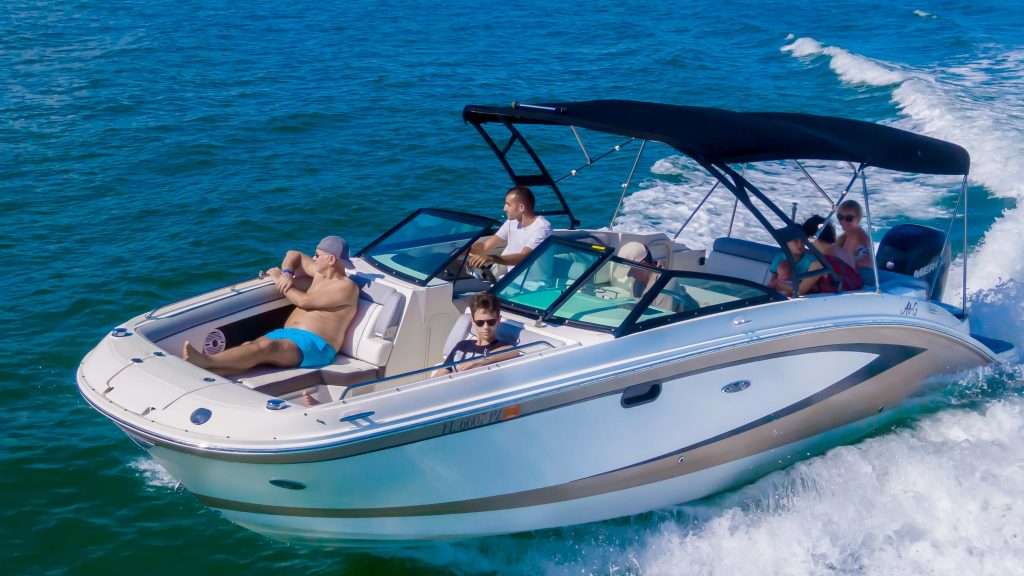
The Luxury Life: Millionaire Row Boat Tour In Miami
Step into the lap of luxury and embark on an unforgettable adventure with the Millionaire Row Boat Tour in Miami. Brace yourself for a mesmerizing journey along the sparkling waters of Biscayne Bay , where opulent mansions line the shores, and the glitz and glamour of the rich and famous come to life. This exclusive tour promises to take you on a captivating voyage through the lap of luxury, allowing you to witness firsthand the extravagant lifestyles of Miami's elite.
As you step aboard the luxurious boat, prepare to be awestruck by the stunning sights that await you. Cruise past magnificent mansions, each more extravagant than the last, and soak in the breathtaking architecture and lavish landscapes that define this coveted neighborhood. With knowledgeable guides on hand to provide fascinating commentary, you'll gain insight into the history, stories, and secrets behind these iconic residences.
Get ready to be captivated by the allure of the Miami skyline as you glide through the crystal-clear waters. Marvel at the sleek yachts and mega-mansions that belong to A-list celebrities, renowned athletes, and business tycoons. From the comfort of your seat, you'll have the perfect vantage point to admire the grandeur and opulence that epitomize the luxury lifestyle of Millionaire Row.
Whether you're a local looking to explore your city's hidden gems or a visitor seeking an unforgettable experience, the Millionaire Row Boat Tour promises to immerse you in the world of the rich and famous. So, hop aboard and let the shimmering waters of Miami whisk you away on a journey of luxury, indulgence, and pure enchantment.
The Luxury Life: Millionaire Row Boat Tour in Miami is the ultimate experience for those seeking a taste of the high life. Explore the stunning mansions and mega-yachts of Miami's elite while cruising along the beautiful waterfront. This tour offers a glimpse into the opulent lifestyles of the rich and famous, with knowledgeable guides providing fascinating insights into the history and architecture of the area. Sit back, relax, and indulge in the luxury of this unforgettable boat tour.
Welcome to Aquarius Boat Rental & Tours!
Welcome to Aquarius Boat Rental & Tours , your premier destination for the best boat rental experiences in Miami, FL. As the #1 Boat Rental with Captain in South Florida, we take pride in offering the most reliable and enjoyable boat rentals to make your time on the water truly unforgettable.
Our Fleet: Luxury Boats for Every Occasion
At Aquarius, we own all the boats we rent, ensuring the highest level of quality and safety for our customers. Whether you're looking for a fun boat for up to 6 people or a giant boat for up to 10 passengers, we have the perfect vessel to meet your needs.
Our boats are fully equipped with Bluetooth speakers, coolers, safety equipment, and floating mats, providing you with everything you need for a fantastic boating adventure. Whether you're celebrating a special occasion or simply want to enjoy a day on the water with friends and family, our luxury boats will exceed your expectations.
Experience the Millionaire Row Boat Tour
One of the highlights of our boat rental service is the exclusive Millionaire Row Boat Tour. This tour takes you along the stunning coastline of Miami's most luxurious neighborhoods, where you'll get a glimpse of the extravagant mansions owned by celebrities, athletes, and millionaires.
As you cruise along Millionaire Row, our knowledgeable captain will provide fascinating commentary about the history and architecture of these magnificent homes. You'll be amazed by the opulence and grandeur on display, and you might even spot a celebrity or two.
Benefits of the Millionaire Row Boat Tour
There are several benefits to choosing the Millionaire Row Boat Tour as part of your Miami boating experience . Firstly, it offers a unique perspective of the city's most exclusive neighborhoods that you won't get from land. Seeing these incredible mansions from the water gives you a true sense of their size and beauty.
Secondly, our experienced captain will share interesting anecdotes and insider information about the homes and their famous owners. You'll gain insights into the lives of the rich and famous, making the tour both educational and entertaining.
What to Expect on the Millionaire Row Boat Tour
When you embark on the Millionaire Row Boat Tour, you can expect a leisurely and luxurious experience. Our boats are designed for comfort, with plush seating and ample space to relax and take in the sights.
As you cruise along the coastline, you'll be treated to breathtaking views of Miami's skyline and the sparkling turquoise waters of Biscayne Bay. Don't forget your camera, as there will be plenty of photo opportunities along the way.
Tips for a Memorable Millionaire Row Boat Tour
To make the most of your Millionaire Row Boat Tour, here are a few tips:
- Arrive early to ensure a prompt departure and maximize your time on the water.
- Dress comfortably and bring sunscreen, sunglasses, and a hat to protect yourself from the sun.
- Bring your own snacks and beverages to enjoy during the tour.
- Listen to the captain's commentary and ask questions to enhance your understanding of the area.
- Relax, unwind, and soak in the luxury and beauty of Millionaire Row.
Transparent Pricing and Easy Booking
At Aquarius Boat Rental & Tours, we believe in transparent pricing . There are no hidden fees when you book with us, and the captain's fee is already included in the displayed price on our website. You'll know exactly what you're paying for, and there won't be any surprises when you arrive at the dock.
Booking your boat rental with Aquarius is a breeze. You can easily reserve your boat online and start planning your Miami boating experience with confidence. Our user-friendly website allows you to browse our fleet, select your desired boat, choose the date and time, and make a secure payment.
What Our Customers Say
Our commitment to providing exceptional service is reflected in the glowing reviews from our satisfied customers. With over 300 five-star reviews, you can trust that your experience with us will be nothing short of extraordinary.
Here's what some of our customers have to say:
"The Millionaire Row Boat Tour was the highlight of our trip to Miami. The captain was knowledgeable and friendly, and the views were absolutely stunning. Highly recommend!" - Sarah M. "Aquarius Boat Rental & Tours exceeded our expectations. The boat was clean and well-maintained, and the staff was professional and attentive. We had a fantastic time exploring Miami's waters." - John D.
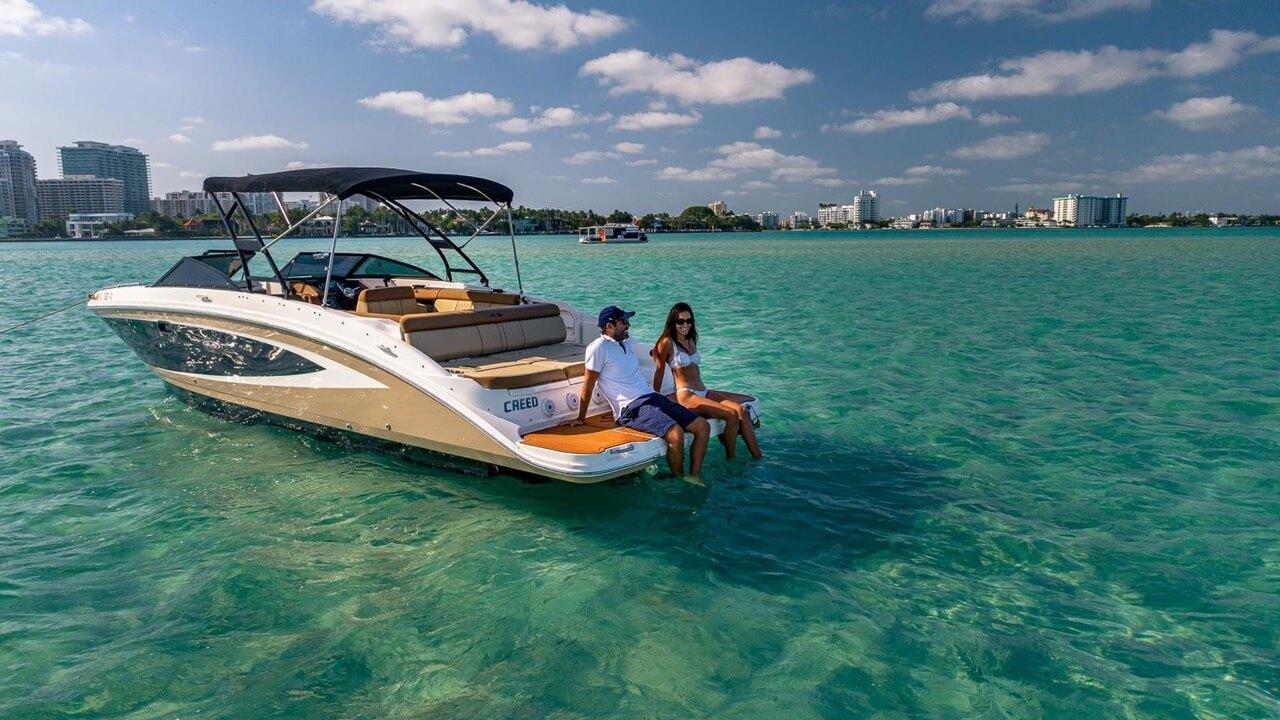
Explore Miami's Beautiful Waters with Aquarius
Aquarius Boat Rental & Tours is your gateway to a luxury boating adventure in Miami. Whether it's a special occasion, a family outing, or just a day of fun on the water, we're here to make it an incredible experience.
Trust the best and book your Miami boat rental with Aquarius today! Visit our website at aquariusboattours.com to browse our fleet, check availability, and secure your reservation. Get ready to embark on an unforgettable journey along Millionaire Row and create memories that will last a lifetime.
Contact us for any inquiries or to book your boat rental:
Phone: 786-636-1008
Email: [email protected]
Location: 5225 Collins Avenue, Miami Beach
Discover the luxury life on the water with Aquarius Boat Rental & Tours. Book now and experience the best Miami has to offer!
Key Takeaways: The Luxury Life - Millionaire Row Boat Tour in Miami
- Experience the ultimate luxury on a Millionaire Row Boat Tour in Miami.
- Get a glimpse into the extravagant lifestyles of the rich and famous.
- Cruise along the stunning Miami coastline and admire the opulent mansions.
- Learn fascinating stories about the wealthy residents and their lavish estates.
- Enjoy breathtaking views of the city skyline and the crystal-clear waters.
What is the duration of the Millionaire Row Boat Tour in Miami?
The duration of the Millionaire Row Boat Tour in Miami is approximately 90 minutes. During this time, you will get to explore the stunning waterfront mansions of Miami's wealthy elite, learn about their history and architecture, and enjoy the breathtaking views of the city skyline.
Our experienced guides will provide you with interesting commentary throughout the tour, ensuring that you have a memorable and informative experience. So sit back, relax, and soak in the luxury of Millionaire Row as you cruise along the beautiful waters of Miami.
What can I expect to see during the tour?
During the Millionaire Row Boat Tour in Miami, you can expect to see some of the most luxurious and extravagant waterfront mansions in the city. These mansions belong to celebrities, athletes, business tycoons, and other wealthy individuals who have made Miami their home.
As you cruise along the water, you will be able to admire the stunning architecture, lush gardens, and impressive yachts that are often docked outside these mansions. Our knowledgeable guides will provide interesting facts and stories about the residents and the history of these iconic properties, giving you a glimpse into the glamorous lifestyle of Miami's elite.
Can I take photos during the tour?
Absolutely! We encourage you to bring your camera or smartphone to capture the breathtaking sights and beautiful moments during the Millionaire Row Boat Tour in Miami. Whether it's a stunning mansion, a picturesque sunset, or a celebrity's yacht, you'll want to preserve these memories.
However, please be respectful of the privacy of the residents and avoid taking pictures of their homes up close. Our guides will provide guidance on where and when it is appropriate to take photos, ensuring that everyone has a great experience without intruding on the privacy of others.
Is the tour suitable for children?
Yes, the Millionaire Row Boat Tour in Miami is suitable for children. It is a family-friendly experience that both kids and adults can enjoy. Children will be fascinated by the grandeur of the mansions, the stories about the famous residents, and the chance to see the city from a different perspective.
Our tour guides are skilled at engaging younger audiences and making the experience educational and entertaining for them. They will provide age-appropriate commentary and answer any questions the children may have, ensuring that the whole family has a memorable and enjoyable time on the tour.
What safety measures are in place during the tour?
The safety of our guests is our top priority. During the Millionaire Row Boat Tour in Miami, we adhere to all safety regulations and guidelines set by the authorities. Our boats are equipped with life jackets for all passengers, and our experienced captains are trained in water safety.
We also have a limited capacity on each boat to ensure that there is enough space for everyone to move around comfortably and maintain social distancing. Hand sanitizers are available onboard, and our crew members regularly sanitize the boats between tours. Rest assured, we take all necessary precautions to provide a safe and enjoyable experience for our guests.
Final Summary: The Ultimate Millionaire Row Boat Tour in Miami
Step into the world of luxury and embark on an unforgettable adventure with the Millionaire Row Boat Tour in Miami. Brace yourself for a mesmerizing journey along the sparkling waters, where opulent mansions and stunning yachts create an awe-inspiring backdrop. This exclusive experience offers a glimpse into the extravagant lifestyles of the rich and famous, allowing you to immerse yourself in the splendor of Miami's elite.
As you glide along the coastline, prepare to be captivated by the architectural marvels that line Millionaire Row. From magnificent estates to sleek modern residences, each home tells a unique story of wealth and success. The tour guides, well-versed in the history and secrets of this prestigious neighborhood, will regale you with fascinating tales and anecdotes, bringing the surroundings to life.
Feel the cool ocean breeze on your face as you cruise past mega-yachts that are fit for royalty. Admire the sleek lines and impeccable craftsmanship of these floating palaces, marveling at the extravagance that lies within. With each passing moment, you'll discover a new level of luxury, as the tour takes you deeper into the world of Miami's elite.
The Millionaire Row Boat Tour in Miami is not just a sightseeing excursion; it's an immersion into a world of opulence and grandeur. Whether you're an architecture enthusiast, a lover of the finer things in life, or simply seeking a unique and memorable experience, this tour is sure to exceed your expectations. So, prepare to indulge your senses and embark on a journey that will leave you with unforgettable memories of Miami's luxury lifestyle.


The global authority in superyachting
- NEWSLETTERS
- Yachts Home
- The Superyacht Directory
- Yacht Reports
- Brokerage News
- The largest yachts in the world
- The Register
- Yacht Advice
- Yacht Design
- 12m to 24m yachts
- Monaco Yacht Show
- Builder Directory
- Designer Directory
- Interior Design Directory
- Naval Architect Directory
- Yachts for sale home
- Motor yachts
- Sailing yachts
- Explorer yachts
- Classic yachts
- Sale Broker Directory
- Charter Home
- Yachts for Charter
- Charter Destinations
- Charter Broker Directory
- Destinations Home
- Mediterranean
- South Pacific
- Rest of the World
- Boat Life Home
- Owners' Experiences
- Interiors Suppliers
- Owners' Club
- Captains' Club
- BOAT Showcase
- Boat Presents
- Events Home
- World Superyacht Awards
- Superyacht Design Festival
- Design and Innovation Awards
- Young Designer of the Year Award
- Artistry and Craft Awards
- Explorer Yachts Summit
- Ocean Talks
- The Ocean Awards
- BOAT Connect
- Between the bays
- Golf Invitational
- Boat Pro Home
- Global Order Book
- Superyacht Insight
- Premium Content
- Product Features
- Testimonials
- Pricing Plan
- Tenders & Equipment
The superyachts owned by tech moguls
Amazon founder Jeff Bezos is set to join the exclusive club of yacht-owning tech tycoons as the rumoured owner of Oceanco's mighty 127m sailing yacht . Though it should come as no surprise - other big names in tech such as the late Steve Jobs, Larry Ellison and Paul Allen have been responsible for some of the biggest and most ground-breaking superyachts in the world...
The 127-metre Oceanco sailing yacht Koru, formerly Y721, was launched and reportedly delivered to Amazon founder Jeff Bezos in April 2023. This three-masted schooner, meaning “new beginnings” in Maori, with an expected 33000 GT and a steel hull and aluminium superstructure, is the largest in the world and the longest built in the Netherlands at Oceanco. Knocking Lürssen's Eos , owned by Biller and Diane von Furstenburg, off the top spot, Koru harnesses design similarities with her black hull, white superstructure and classic lines. However, the intricate gold paintwork, scarlet bootstrap and elaborate figurehead on the bow particularly set her apart.
Larry Ellison
American business magnate Larry Ellison is the co-founder of the billion-dollar computer tech corporation Oracle. In 2004, he commissioned the 138-metre Lürssen superyacht Rising Sun (pictured), which stands today as the 15th largest yacht in the world. It was also the last yacht that ever came from the drawing boards of legendary designed Jon Bannenberg, sporting a military-esque profile with a lean destroyer-type hull and extensive use of structural glass . Rising Sun boasts 8,000m² of living space including a wine cellar and basketball court, with a crew of 45. One of her tenders, a catamaran, even carries the yacht’s 4x4 vehicle ashore.
Ellison later sold the yacht to media mogul David Geffen and has since hosted a parade of Hollywood's glitterati on board including Leonardo DiCaprio, Steven Spielberg, Bruce Springsteen and Oprah Winfrey – to name a few.
In 2011, Ellison appeared to downsize and took delivery of the 88-metre Feadship Musashi . Not unlike Rising Sun in its appearance, structural glass features heavily throughout with a central glass lift, surrounded by a stainless steel and glass staircase that passes through every deck.
More about this yacht
The late Microsoft co-founder Paul Allen is responsible for two of the most iconic superyachts in the world. At 126-metres in length, Octopus is perhaps his most famous. Built by Lürssen in 2003, this ice-classed superyacht was designed for extended cruising to the most remote locations on earth with a range of 12,500 nautical miles. Home to a helicopter garage, drive-in tender garage, six tenders, and a submarine, she packs a serious punch within her 9,932GT – not to mention the cinema, swimming pool, recording studio, basketball court and spa. At the end of 2019, she joined the market for the very first time , having completed an eight-month refit at Blohm+Voss, and remains the benchmark for exploration yachting.
Tatoosh is another honourable mention and was built by German shipyard Nobiskrug in 2000, three years prior to the delivery of Octopus . At 92-metres, she's smaller than her successor, but to describe Tatoosh as "small" would be a severe understatement. Highlights include a six-foot-deep swimming pool, a pair of helipads, a crew of 30, and a custom 12-metre Hinckley powerboat that she carries on her top deck. Tatoosh is also listed for sale following a refit earlier this year.
Yachts for charter
The 78-metre Feadship Venus was built for the late Apple boss and founder Steve Jobs. Built under the codename Project Aqua, Venus was launched to international fanfare in 2012, heralded for its extensive use of glass and pared-back design courtesy of Philippe Starck . Innovative features include a false top deck that conceals the communication and television receivers from view and a passarelle that, when opened, looks like the charging port of an iPhone. Venus ’s interior details have been closely guarded since its launch. Sadly, Jobs died a year before the yacht was delivered.
Charles Simonyi
Charles Simonyi led the team that built the first edition of the Microsoft Office software suite and was rumoured to have previously owned Lürssen’s iconic 71-metre SKAT . Nearly two decades after her launch in 2002, she joined the market for the first time and now Simonyi is thought to have upgraded to the 89-metre Lürssen Norn . Both yachts, penned by Espen Onion, share similar design features. Standout features include an alfresco cinema and adapted depth pool floor with dance floor. Norn was delivered in May 2023.
Sergey Brin
Google co-founder Sergey Brin reportedly owns the high-speed SilverYachts superyacht named Dragonfly , after Google’s once-secret project to launch a censored search engine in China. Delivered in 2009, the 73.3-metre Dragonfly was hailed as the fastest, most fuel-efficient long-range cruising superyacht on the water with a transatlantic range at 22 knots and a fuel consumption of only 360 litres per hour at 18 knots, extending her range to 4,500 nautical miles. Dragonfly is said to have a dance floor and open-air movie theatre on board. The vessel was applauded for its contribution to the disaster relief effort in Vanuatu after Hurricane Pam devastated the island in 2015. The crew reportedly moved 62 metric tons of freshwater ashore, treated over 250 patients, facilitated three medical evacuations, and built shelters in multiple villages and cleared numerous helicopter landing zones for ongoing support.
Google’s billionaire co-founder Larry Page purchased the 60-metre explorer yacht conversion Senses from a New Zealand businessman Sir Douglas Myers back in 2011. The globe-trotting superyacht features interiors by Philippe Starck and can accommodate a total of 12 guests on board, with primary guests reaping the benefits of the master suite's gyro-stabilised bed. Senses also houses an exceptional toy box with three high-speed tenders, six wave runners, a jet board and a JetLev. According to the New Zealand Herald, Senses is currently undergoing a refit in Whangārei, New Zealand, after being sold to an unknown buyer in 2020.
Barry Diller
The world’s largest three-masted schooner – also the third largest sailing yacht in the world – is owned by fashion designer Diane von Fürstenberg and her husband Barry Diller, chairman and senior executive of IAC/InterActiveCorp and Expedia Group. The 92.92-metre sailing yacht, named Eos , was built in Germany by Lürssen and delivered in 2006 with a trio of masts that stand 61-metres tall. The sailing yacht has hosted the couple's star-studded group of friends including Andy Cohen, Gayle King, Bradley Cooper, Harry Styles and Karlie Kloss. The interiors were designed by Francois Catroux, who Vanity Fair named as “the super-rich's favourite interior designer" in 2016.
Mark Zuckerburg
The 107-metre Kleven superyacht Andromeda was built for serial superyacht owner Graeme Hart and delivered under the name Ulysses . In 2017, a year after its launch, rumours began circulating that Facebook founder Mark Zuckerburg had purchased the rugged, six-deck explorer (although a Facebook spokesperson was quick to stamp out the rumours and released a statement denying the claims). Andromeda can carry 36 guests and is equipped with an impressive inventory of toys and tenders, including six motorbikes, two ATVs, a helicopter and an amphibious rib. Five years after her launch, Andromeda still ranks among the largest explorer yachts in the world .
Eric Schmidt
The former Google ceo Eric Schmidt backed out of the purchase of the abandoned 81.3-metre Oceanco Alfa Nero but has been said to have moved onto become the new owner of a 95-metre Lürssen. Kismet was sold in September 2023 to the billionaire as part of one of the biggest brokerage deal of the year. With the details shrouded in secrecy the yacht is now aptly known as Whisper . Espen Onio was responsible for her iconic exterior while inside was thanks to Reymond Langton , achieving the original brief from the previous commissioning owner Shahid Khan of “caviar and champagne.” Standout details include the hi-tech, art deco saloon, a private observation platform and the Persian-inspired spa area.
The co-founder and former ceo of WhatsApp, Jan Koum, has been rumoured to own the 99.9-metre Feadship , Moonrise. The yacht’s clean and strong lines, penned by Chris Bottoms from Studio de Voogt , won the highly competitive class of best displacement motor yachts above 3,000 GT in the World Superyacht Awards 2021. Features include the helicopter landing deck and modern interiors by Remi Tessier . Accommodation is for up to 16 guests, and there are 32 crew members onboard Moonrise to attend to the guests' every need. The Ukrainian-American mogul is also said to own the accompanying support vessel Nebula.
Evan Speigel
The Silicone Valley ceo, Snapchat founder Evan Spiegel has been reportedly said to own the 94.8-metre Feadship Bliss. Delivered in 2021 the motor yacht penned by Feadship's Studio De Voogt Naval Architects has most recently been spotted cruising Auckland in September 2023. Spiegel is rumoured to be Feadship's younger client. Bliss can accommodate up to 18 guests across nine staterooms; however little else is known about the 2983 GT yacht.
Sponsored listings
Millionaire Yacht Marketplace: Navigating Luxury on the High Seas
Introduction.
In today's world, where opulence knows no bounds, the allure of owning a yacht has transcended from being a symbol of luxury to a status statement of immense wealth and extravagance. Welcome to the Millionaire Yacht Marketplace , a realm where the most affluent individuals fulfill their maritime dreams. This article will take you on an extraordinary voyage through this opulent world, exploring the fascinating facets of yacht ownership, customization, trends, and more.
The Evolution of Yachts
Yachts, once merely a mode of transportation for the elite, have evolved into floating palaces. With a lineage tracing back to ancient times when Egyptian pharaohs sailed the Nile in extravagant vessels, today's yachts are technological marvels. The Millionaire Yacht Marketplace offers yachts that are not just for cruising; they are floating mansions equipped with the latest innovations in luxury living.
Yacht Types and Classifications
In this luxurious arena, yachts come in a variety of sizes and styles, each catering to the unique tastes and preferences of their owners. From sleek and sporty motor yachts to classic and elegant sailing yachts, the Millionaire Yacht Marketplace has an extensive inventory that ensures every desire is met.
- Motor Yachts
Motor yachts are known for their speed and opulence. These floating powerhouses are equipped with powerful engines, offering unparalleled comfort and extravagance. They often include features such as spacious sundecks, state-of-the-art entertainment systems, and lavish cabins.
- Sailing Yachts
Sailing yachts, on the other hand, represent a more classic and environmentally friendly way to navigate the open waters. With their billowing sails and timeless elegance, they appeal to those who appreciate the art of sailing and the serenity it offers.

Customization: Crafting Dreams into Reality
One of the most enticing aspects of the Millionaire Yacht Marketplace is the level of customization available. Yacht owners have the opportunity to transform their vessels into personal paradises. From onboard cinemas to underwater viewing rooms, the only limit is one's imagination. The marketplace caters to every whim, ensuring that every yacht is a reflection of its owner's personality and desires.
The Art of Chartering
Not all yacht enthusiasts are yacht owners. Many choose to charter these magnificent vessels for special occasions or extended vacations. The Millionaire Yacht Marketplace provides a plethora of options for chartering, allowing individuals to experience the yacht lifestyle without the responsibilities of ownership.
Sustainability in the Millionaire Yacht Marketplace
As the world embraces environmental consciousness, the Millionaire Yacht Marketplace is no exception. Yacht manufacturers are incorporating eco-friendly technologies, such as hybrid propulsion systems and advanced waste treatment, to reduce the environmental impact of these luxurious vessels.
Trends in Yachting
The world of yachting is ever-evolving, with trends that reflect the changing tastes of the elite. Currently, sustainable yachting, futuristic designs, and wellness-focused amenities are taking center stage. Yacht owners are increasingly valuing experiences like on-deck yoga sessions and farm-to-table dining.
In the Millionaire Yacht Marketplace, the dream of owning or chartering a yacht becomes a reality. This opulent realm caters to the desires of the elite, offering a glimpse into a world where luxury knows no bounds. From customization to sustainability and emerging trends, the yachting industry is setting sail into an even more lavish and environmentally conscious future.
Q: How much does it cost to own a millionaire yacht? A: The cost of owning a millionaire yacht varies greatly depending on size, customization, and brand. Prices can range from several million dollars to hundreds of millions. Q: What is the most popular yacht type in the marketplace? A: While they cater to the wealthy, many of these spots are available to anyone looking to experience luxury travel.Motor yachts are currently the most popular choice due to their speed and luxurious amenities. Q: Are there financing options available for yacht purchases? A: Yes, many financial institutions offer yacht financing options tailored to the needs of high-net-worth individuals. Q: Can I charter a yacht for a day, or do I need to book an extended trip? A: You can charter a yacht for a single day or for longer durations, depending on your preferences and availability. Q: Are there any eco-friendly yachts available in the marketplace? A: Yes, the marketplace offers a selection of eco-friendly yachts equipped with advanced technologies to minimize their environmental impact.
Similar News

- Super Yachts
- The Billionaires Club

- Favorites 0

The World’s Largest Super Yachts
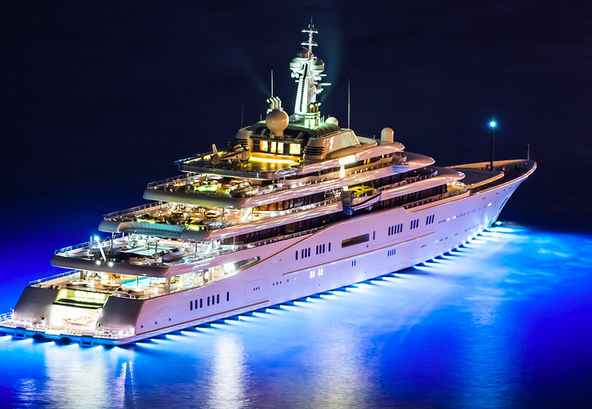
M/Y ECLIPSE 162m Mega Yacht by Blohm & Voss GmbH
- €750,000,000

M/Y BLUE 160m Mega Yacht by Lürssen
- €700,000,000
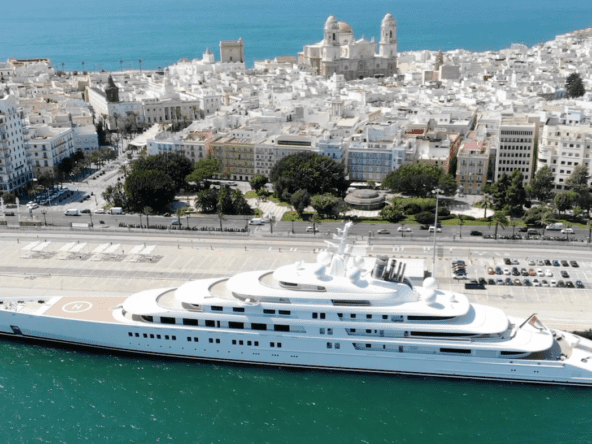
M/Y AZZAM 180m Super yacht by Lürssen Yachts
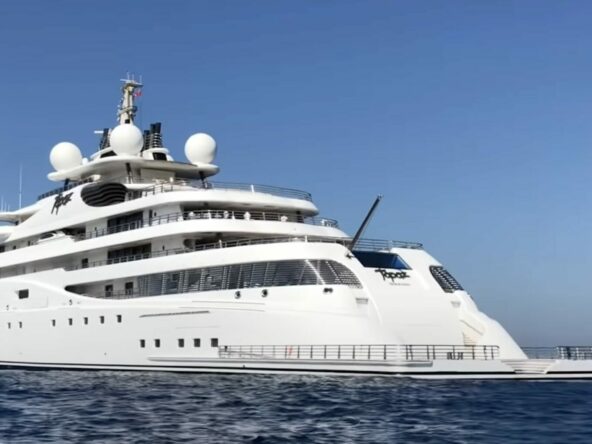
M/Y +A (ex. TOPAZ) 147m Super Yacht by Lürssen Yachts
- €560,000,000
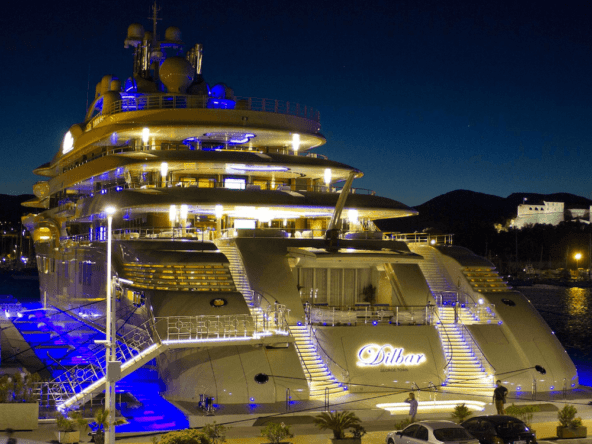
DILBAR 156m yacht the largest by weight built by Lürssen
- €500,000,000
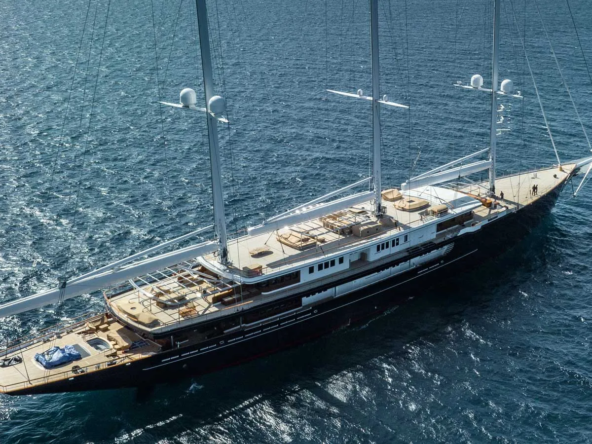
S/Y KORU 127m Sailing Yacht by Oceanco
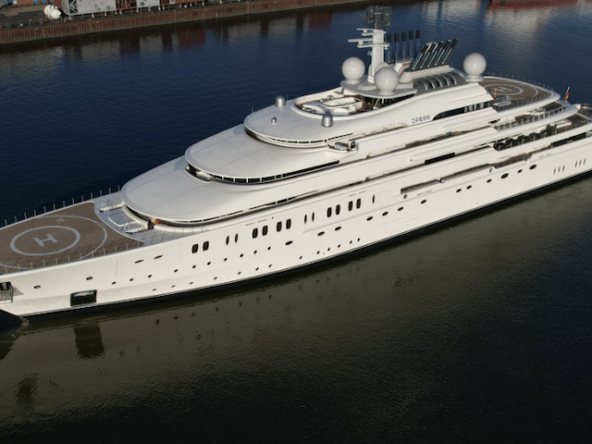
M/Y OPERA 146m Mega Yacht by Lürssen Yachts
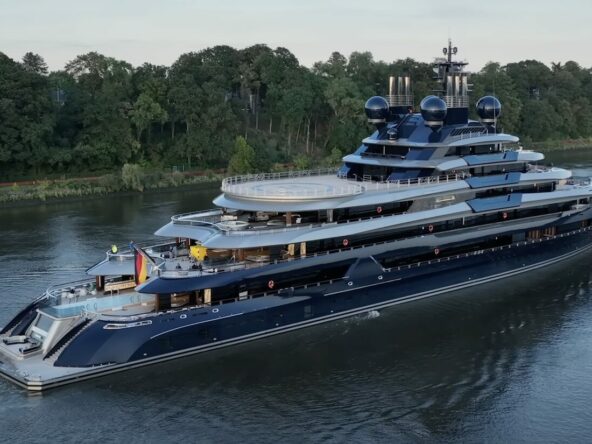
M/Y LUMINANCE 145m Super Yacht by Lürssen Yachts
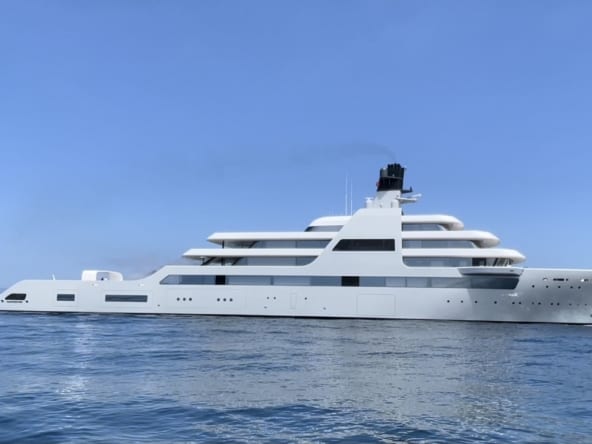
M/Y SOLARIS 140m Expedition Yacht by Lloyd Werft
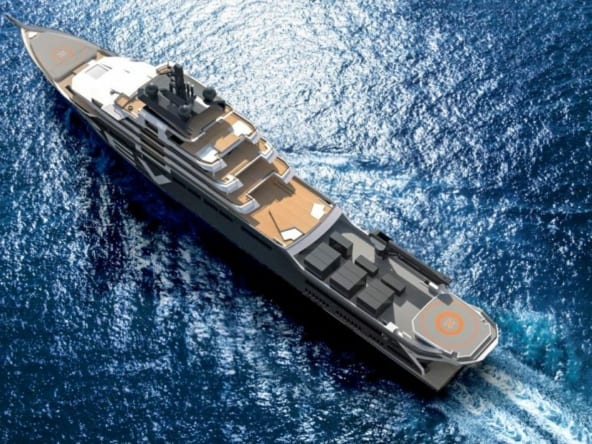
The REV 181,6 m Super Yacht by Vard shipyard
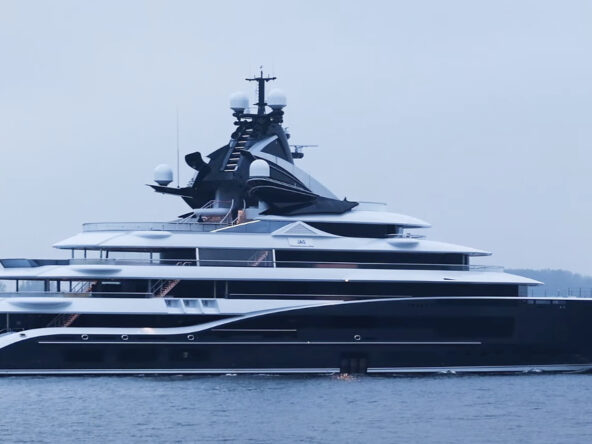
M/Y KISMET – Project JAG 122m Super Yacht by Lürssen Yachts
- €450,000,000
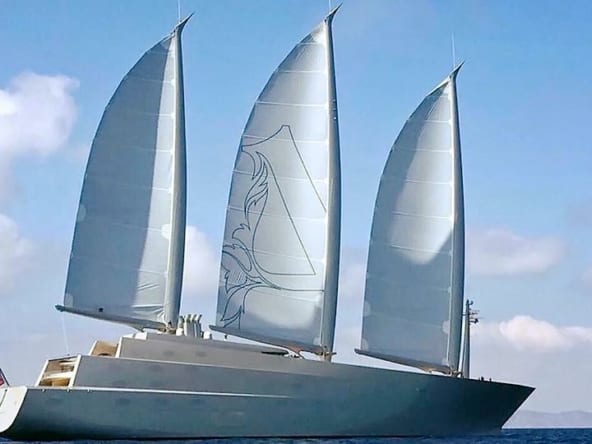
“S/Y A” 142m the World’s Largest Sail yacht by Nobiskrug
- €400,000,000
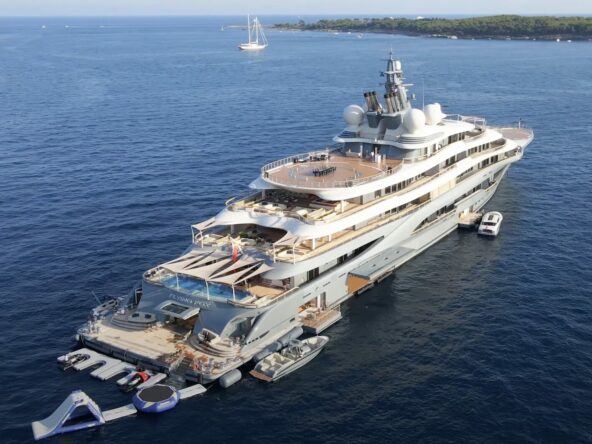
M/Y FLYING FOX 136m super yacht by Lürssen Yachts
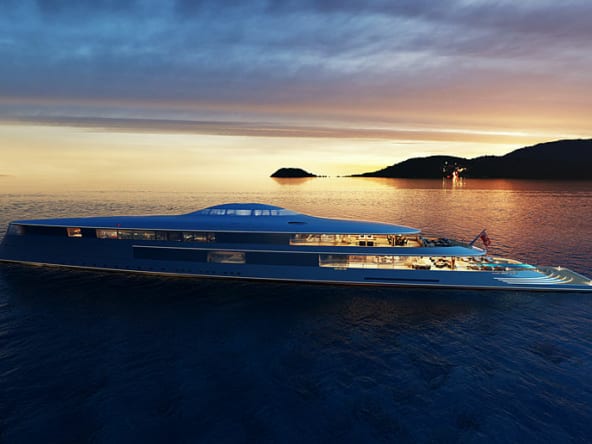
M/Y AQUA 112m Project by Sinot Yacht Design
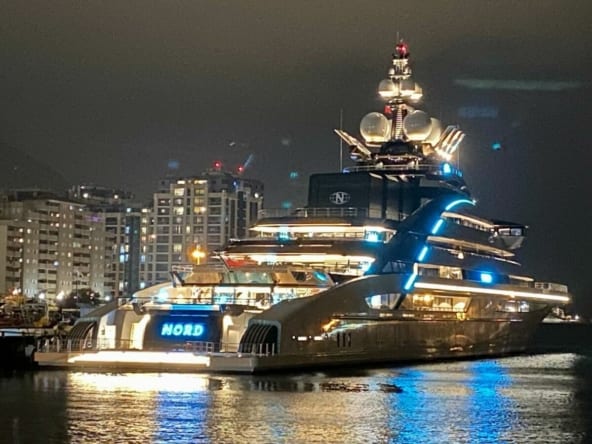
M/Y NORD 142m Super Yacht by Lürssen Yachts
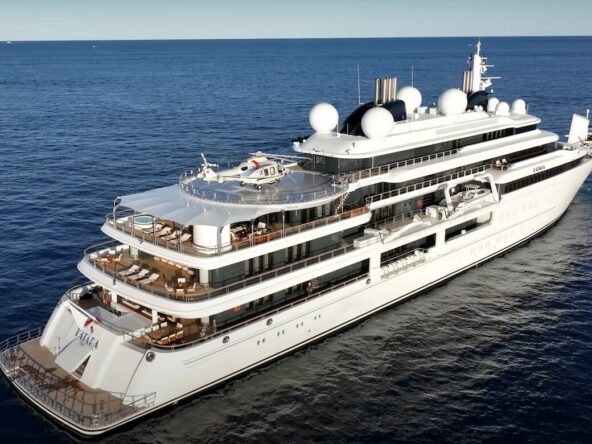
M/Y KATARA 124m Royal yacht by Lürssen Yachts
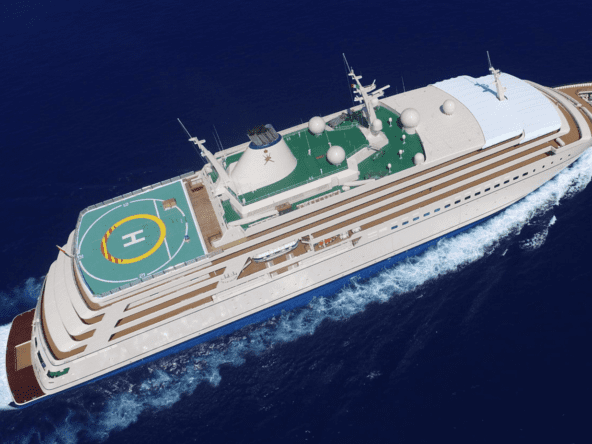
FULK AL SALAMAH 164m Royal Oman ship by Mariotti
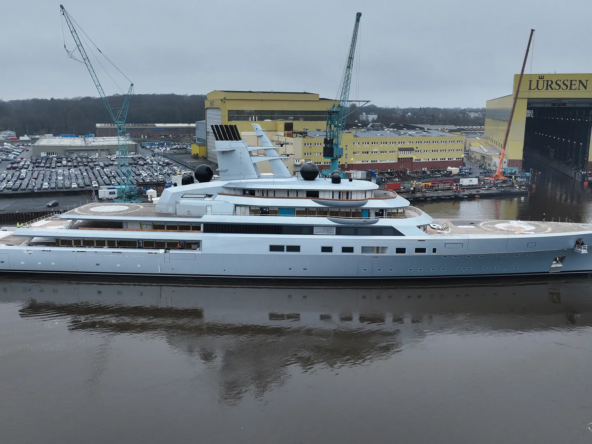
🌟 PROJECT ALIBABA 142m Mega Yacht by Lürssen
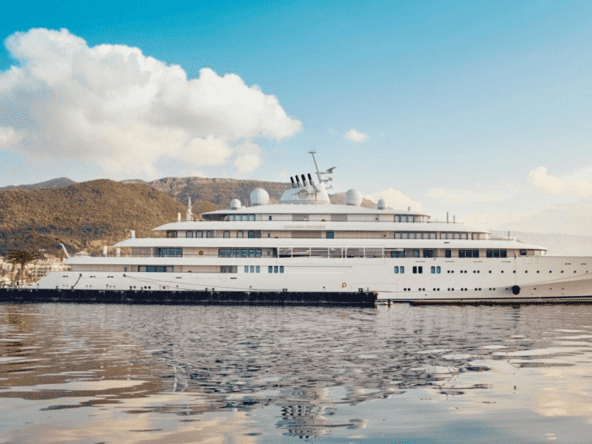
GOLDEN ODYSSEY 124m Saudi Royal yacht by Lürssen
- €350,000,000

PROJECT COSMOS 114m Super Yacht by Lürssen
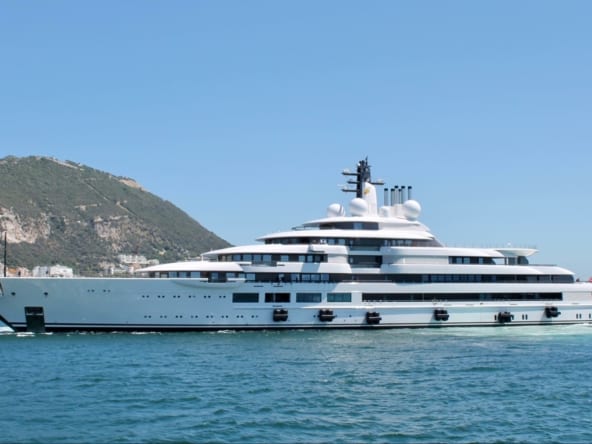
M/Y SCHEHERAZADE 140m Mega Yacht by Lürssen
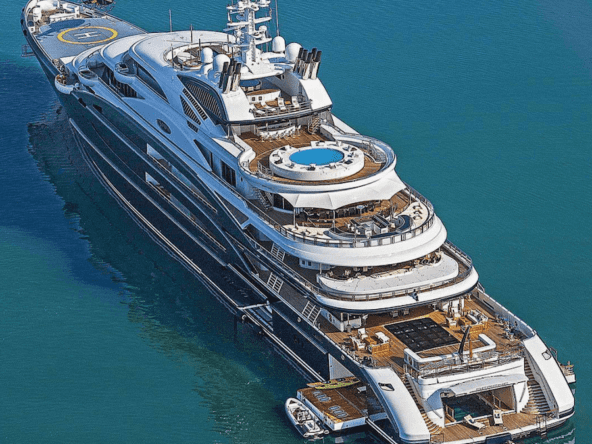
M/Y SERENE 134m Royal Saudi Yacht by Fincantieri
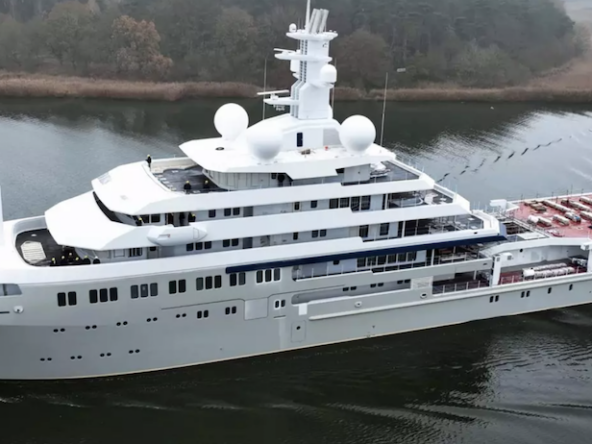
M/Y SHACKLETON 109m Explore Yacht by Lürssen Yachts

M/Y AL LUSAIL 124m Royal Qatar yacht built by Lürssen
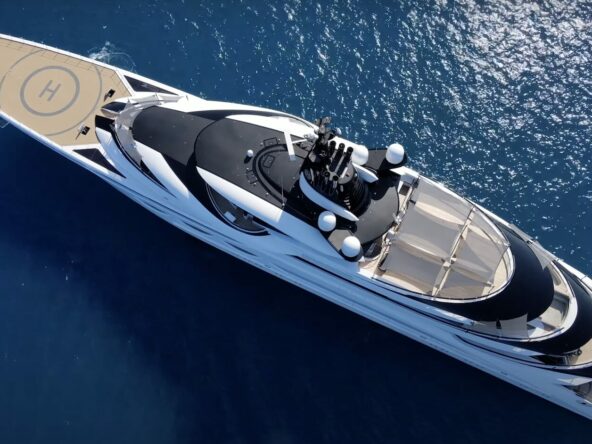
M/Y LADY JORGIA ex. AHPO 115m Super Yacht by Lürssen
- €330,000,000
- €2,600,000/p/w charter

M/Y AMADEA 106m Super Yacht by Lürssen
- €325,000,000
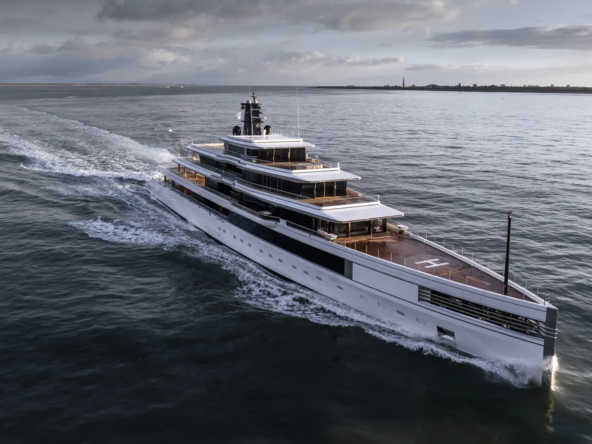
M/Y Ulysses 103m Super Yacht by Feadship
- €320,000,000
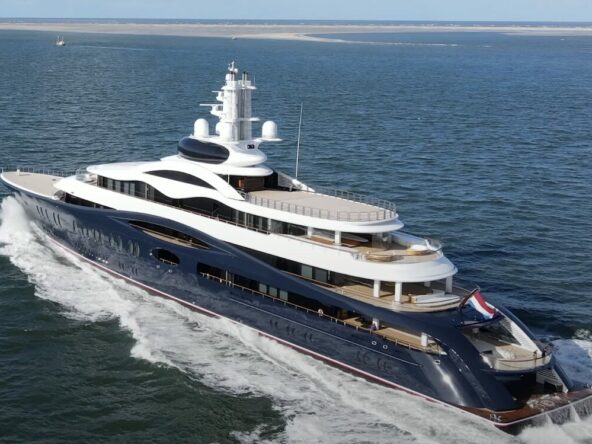
M/Y LAUNCHPAD 119m Super Yacht by Feadship
- €300,000,000
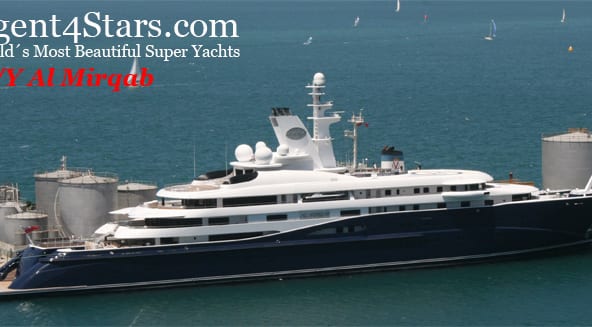
AL MIRQAB 133m Royal Super yacht by Peters Schiffbau
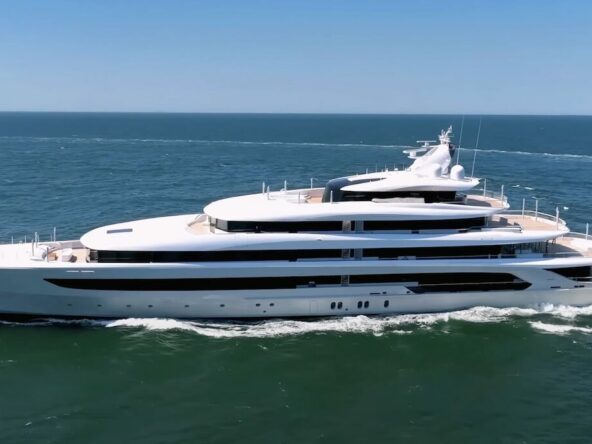
M/Y H3 105m Super Yacht by Oceanco
Compare listings
Reset Password
Please enter your username or email address. You will receive a link to create a new password via email.
- Nautic Shows
- America’s Cup
- Classic Yachts
- Motor Yachts
- Sailing Yachts
- Superyachts
- Yachts News
- Destinations
- Yacht Clubs
- Boat Racing
- Meta Yachts

If this were a real James Bond scenario, it would be a darn good one. A James Bond-themed superyacht, aptly called 007 and restyled to resemble something the world-famous spy would sail, has been refloated, six full months after it was intentionally run aground.
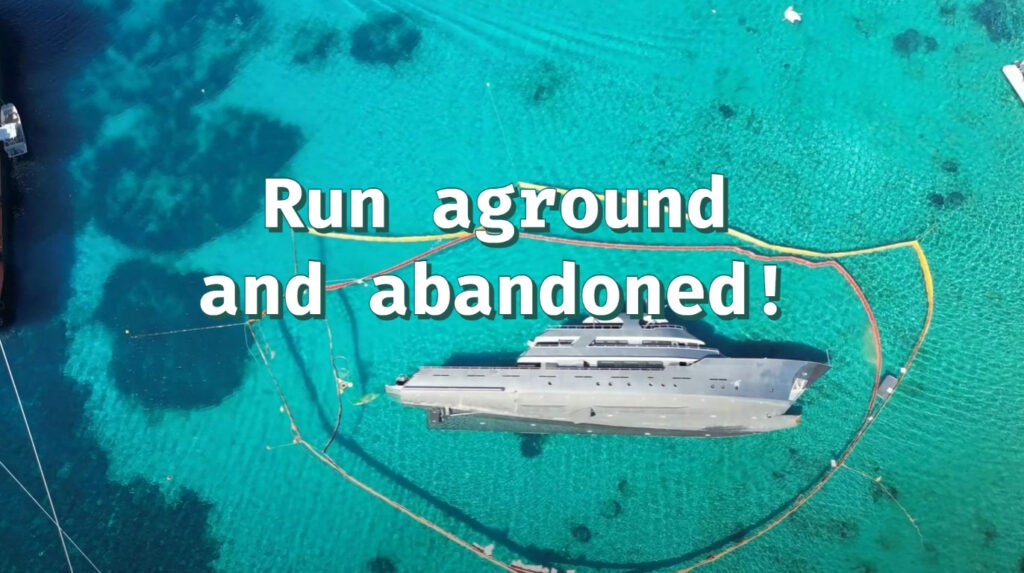
On September 2, 2022, 007 ran aground off the coast of Greece, in Kolona Bay, some 15 meters (49.2 feet) from the beach. Initial reports said that some kind of navigation error had steered the vessel off course, so it hit rocks when it entered shallow waters. The hull was pierced and it started taking on water, so, to prevent it from sinking into deeper waters, the captain ran it aground.
After that, 007 tilted to the port side and eventually capsized, ending up on its side. It spent the next six months that way, with authorities seemingly in no rush to salvage it, though they did put up floating walls to keep pollution under control. As of this moment, the exact damages to the ecosystem are unknown.
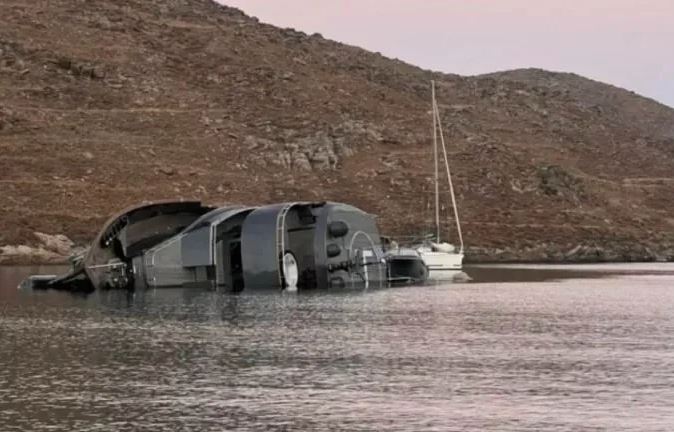
On March 6, Greek authorities began the salvage operation, which concluded on March 22, with 007 refloated. If this happened in a James Bond movie, it would probably be the scene before the end credits, and Bond himself (Bond, James Bond) would make an appearance alongside the lady of the moment, and they would kiss as the camera would zoom out on the beautiful vessel, back in an upright position.
But this is no movie, and the situation continues to remain very strange, beyond the fact that authorities waited half a year to remove a vessel that posed a danger to the picturesque area.
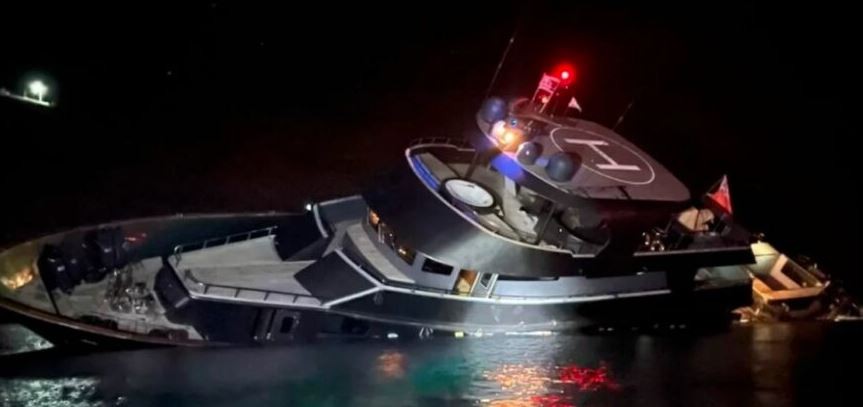
By the looks of things, 007 has been abandoned by the owner, a millionaire businessman who was also the captain, amid claims that he deliberately ran it aground for other reasons than those having to do with the danger of sinking. One particular report, included in the second video available at the bottom of the page, says that he did it because the ship was no longer seaworthy and may have had severe balance issues brought on by repeated modifications to the hull.
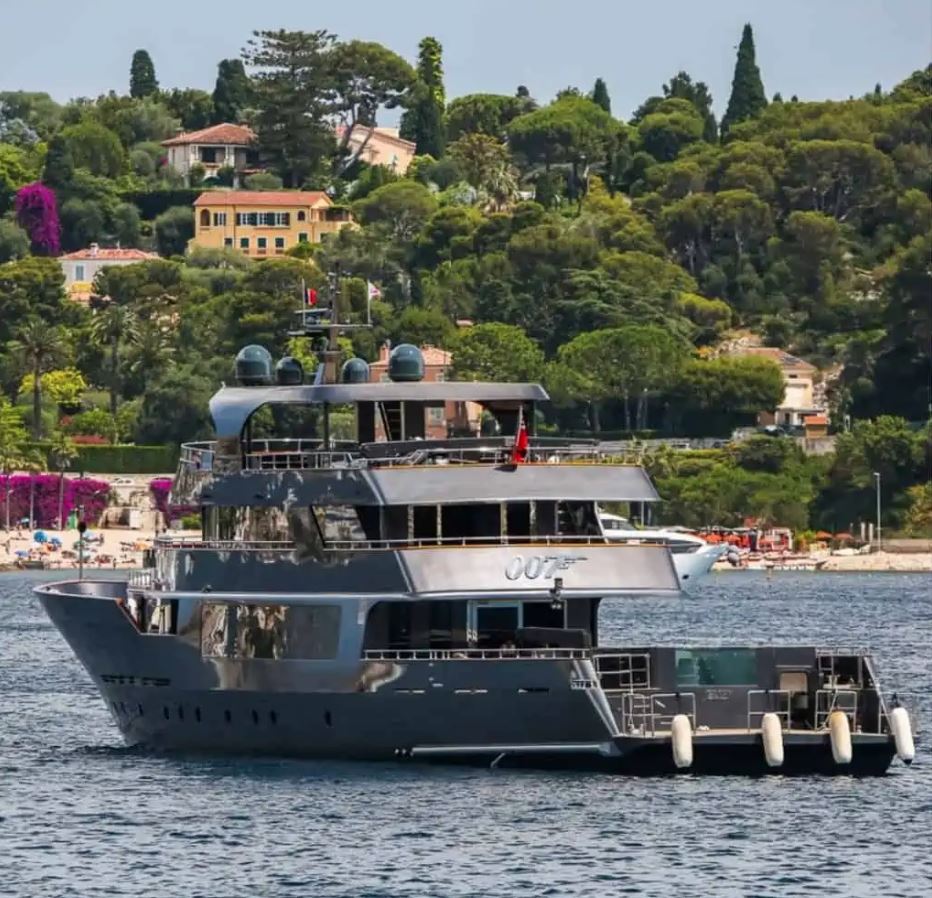
Delivered in 2006 by Aegean Yachts as Royal Enterprise, 007 was initially a 32-meter (105-foot) that was modified extensively in subsequent refits. When it ran aground, it was 49 meters (160 feet) long and featured all the trappings of larger superyachts, including a touch-and-go helipad and an additional deck that wasn’t in the original design by Yavuz Mete.
According to the latest reports in the Greek media, the millionaire owner has been given one month to recover his superyacht, now that it’s been refloated, after which he will be liable to huge fines. Whether he’s actually coming back for it, after it spent half a year half-underwater, remains to be seen
RELATED ARTICLES
Zuckerberg buys $300 million russian superyacht, megayacht a cost italy 18 million euros and it will still cost, sergei naumenko, owner of phi, unsuccessful in appeal against yacht’s detention, nancy walton’s $300 million megayacht ‘kaos’ seeks safe haven in monaco after vandalism threats, draft law proposes banning internal combustion charter boats in balearic islands from 2030, sanlorenzo to build the world’s first superyacht powered only by green methanol.

Subscribe to our newsletter
To be updated with all the latest news, offers and special announcements.
LATEST ARTICLES
Cannes yachting festival 2024: showcasing innovation and joy on the french riviera, sailgp season 4 heats up: bermuda grand prix marks a pivotal turn, exploring ineos britannia’s ac75 launch: a leap in america’s cup competition, emirates team new zealand preparations for america’s cup and kiwi cup raffle, editor picks, canadian beau lake introduces the tahoe ’14 and lugano ’14 electric runabouts, underwater adventure and exploration with deepflight’s super falcon 3s, driving performance on land and on water: 41′ amg carbon edition, popular posts, young designer of the year 2022: ioana valentina corcodel reveals 65m ophelia concept, mirabaud sailing video of the century: celebrating 2 decades of passion, superyacht the flying fox seized in the dominican republic, popular category.
- Regatta 823
- America's Cup 422
- Motor Yachts 264
- Boating 216
- Superyachts 186
- Sailing 179
- Yachts News 174
- Sailing Yachts 165

People also watched
In 2003 a british reality show firebombs the life of beautiful model miriam rivera. the story of one of the most controversial tv events of the last 25 years and the questions that remain unanswered. miriam: death of a reality star, next-generation true crime series revealing the ground-breaking police techniques used to solve murders on britain's streets. part of true crime on channel 4. murder case: the digital detectives, how do you convince a killer to confess to their crimes follow the gripping twists and turns of real-life interrogations as detectives question suspected murderers. part of true crime on channel 4. interrogation raw, bargain-blagger joe wilkinson and luxury-lover katherine ryan show us how to live the champagne lifestyle on a lemonade budget with some fantastically affordable getaways joe & katherine's bargain holidays, on the beat with the cops who police brighton's hectic night life - where sometimes dark humour is the best way of making it through the night. part of true crime on channel 4. night coppers, the chances of solving a homicide are cut in half if a lead isn't found within 48 hours. this documentary series follows detectives as they race against the clock. part of true crime on channel 4. the first 48, the landmark documentary series that captures real life drama at its most intense, following police detectives around the clock as they investigate major crimes 24 hours in police custody, cameras film around the clock in some of britain's busiest a&e departments, where stories of life, love and loss unfold every day 24 hours in a&e.
Michigan woman charged in boat club crash that killed 2 children released on bond
A Michigan woman facing eight charges stemming from a crash that killed two children at a boat club was released Thursday on a $1.5 million bond, according to the jail and her attorney.
Marshella Chidester, 66, is accused of slamming an SUV into the Swan Boat Club, where a birthday party was taking place on Saturday about 30 minutes southwest of Detroit. Two children died and over a dozen others were injured, with several still hospitalized.
The Newport, Michigan, woman was released two days after she was arraigned in Monroe County District Court on the charges, which include two counts of second-degree murder and two counts of driving while intoxicated, causing death.
Two siblings, 8-year-old Alanah Phillips and 4-year-old Zayn Phillips, were killed. Their mother, Mariah Dodds and her 11-year-old son survived, though he's facing serious injuries including broken legs and ribs and a fractured skull.
Chidester suffers from 'epileptic type seizures,' attourney says
Bill Colovos, Chidester's attorney, argued in court that his client suffers from "epileptic-type seizures" in her legs and that she only had one glass of wine the day of the crash.
Upon Chidester's release Thursday, Colovos emphasized that a medical issue caused the crash, adding that his client suffers from neuropathy, "blacked out" from a seizure and is "very remorseful."
"She feels absolutely horrible. To black out, then all of the sudden be told that two young children were killed. Colovos told the Detroit Free Press , part of the USA TODAY Network. "It's like a bad dream you wake up from."
Chidester started having the seizures in November and a doctor told her to stop driving for two months, but did not restrict her further, Colovos said in court earlier this week.
Alcohol breath test exceeded legal limit, prosecutor says
Monroe County prosecutor Jeffery Yorkey said in court that a preliminary alcohol breath test was "significantly over the legal limit" but did not specify what the results were. Colovos said he is still waiting on a medical report that would determine his client's blood-alcohol level around the time of the crash.
"Believe me, I'm waiting for it," Colovos said.
Yorkey asked for the $1.5 million cash bond, pointing to what he says is a history of "severe substance abuse."
Judge Christian Horkey agreed to the bond and set conditions upon her release: Chidester is prohibited from consuming alcohol or any illegal substances and is not allowed to drive. She must undergo substance abuse testing and monitoring, which includes wearing a tether, Horkey said.
Mother sues nearby restaurant Chidester visited
Dodds filed a lawsuit against Chidester and the restaurant that police say Chidester was drinking at earlier in the day of the crash. The business temporarily closed after the crash due to the police investigation.
The lawsuit accuses Chidester of gross negligence, alleging she drove into the north wall of the boat club fast enough to enter about 25 feet inside the building until her car stopped.
The lawsuit also accuses the restaurant of selling Chidester alcohol while she was visibly intoxicated.
Angie Huffman, who said her mother owns the restaurant, confirmed in an email to the Free Press that Chidester visited the restaurant at 11 a.m., saying she had one glass of wine and a bowl of soup. Huffman said she's confident the police investigation will show the restaurant is "not at fault."
Family receives over $224,000 in donations
A GoFundMe for the family was linked at the club's website and raised over $224,000 as of Thursday. The funds will go toward funeral and burial costs, as well as future medical and other incurred expenses as the family mourns.
In an update Tuesday, the page said funeral service arrangements are on hold until the parents "are in a more stable condition for such decisions and planning."
Contributing: Frank Witsil, Detroit Free Press

Trailer owners win as National Park Service changes course on boat parking policy at Cottonwood Cove
L AS VEGAS ( KLAS ) — The federal government’s change of heart over parking rules could restore peace of mind for trailer owners at Cottonwood Cove, a remote hideaway that’s one of the last of its kind on National Park Service (NPS) land.
It’s a dramatic reversal in a story 8 News Now brought you in February , but it’s been in the works for months following a contentious community meeting where people shouted their questions at NPS officials and representatives of concessionaire Lake Mead Mohave Adventures, part of Guest Services Inc. (GSI)
NPS has been laying the groundwork to eliminate trailer villages by 2043. In February, tenants had just learned of the changes and they were not happy.
For Cottonwood Cove, it meant tenants would be forced to park their boats and other vehicles at a dry storage area just up the road when they weren’t staying at the trailer village. Trailer owners are allowed to use them only 180 days out of the year under terms of their leases. For decades, they had parked their boats under awnings next to their trailers — awnings they also paid for.
They were told that was a fire hazard. That bewildered people in the crowd in February, and officials struggled to make their point that there was fuel in the boats. Tenants countered that people park their cars next to buildings all the time. What’s the difference?
A change of heart
The comments didn’t fall on deaf ears. Lake Mead National Recreation Area Supt. Mike Gauthier was there but spoke only briefly. He was still there after the crowd dispersed, talking with people who had asked questions, including a retired fire marshal who owns a trailer at the park.
“Our superintendent heard that, as did his team, and they took it back to Boulder City to their office, and the very next Monday, Supt. Gauthier called me and says, ‘Hey, I heard what you said. I heard what GSI said. I heard what other members, owners said. And I was listening. And I’m going to work on this,’ ” recounts Jim Gartner, a volunteer who runs the village trailer owners association.
“And he really did. He worked on it since that time. And in a very short time was able to change rules that appeared to be cast in concrete from Washington. Needless to say that was very impressive,” Gartner said.
Gauthier, who became permanent superintendent at Lake Mead National Recreation Area last summer, was not available for comment for this story. “We heard from the trailer owners at Cottonwood Cove and amended the boat storage policy. The NPS thanks Guest Services Inc. for working with us to help park visitors have a great experience,” John Haynes, Public Affairs Officer for Lake Mead, said Friday.
It’s not the only change. Officials also removed restrictions related to trailer owners’ choice of assessors if they decided to sell. Only some assessors are approved to deal with property on government land, but officials are going to allow any assessor to work with trailer owners.
Rod Taylor, vice president of hospitality at Guest Services, provided this statement late Friday:
“Guest Services is pleased to announce that an updated set of National Park Trailer Village Standards was signed into effect by the recently appointed Superintendent of Lake Mead National Recreation Area, Mike Gauthier. The old standards were implemented in 1999 and used to manage the long-term mobile home parks at Lake Mead and Lake Mohave. Through a collaborative process with Guest Services and other stakeholders, Mr. Gauthier and his team worked to modify the standards that better served all the stakeholders in the park creating more user-friendly terms while promoting better safety in the park.
“Additional rules based on the terms of Cottonwood Cove’s new lease require all mobile homes be relinquished or removed at the end of year 19 of the contract.
“In the near future, you can find the new standards, along with Cottonwood Cove’s Rules at https://cottonwoodcoveresort.com/forms/ .”
Trailer owners happy
Gartner said about a half-dozen trailer owners sold since the February meeting. There are about 225 trailers at the village, he said. About half are members of the association.
Gartner is preparing notices for those members to inform them of the changes, but many already know after attending a barbecue last weekend at Cottonwood Cove. Trailer owner Jim Stahovich was there, and he said Friday that trailer owners are happy the rules had been revised.
“We can now continue to store our boats at our trailer site as in the past,” Stahovich said. “The Parks Service had reconsidered the situation and thankfully worked things out with us.”
In February, Stahovich said people understand the trailer village is being eliminated, but it didn’t make since to put a bunch of new rules in place. Now, he’s looking to the years ahead.
“There are a lot of changes planned for the future of Cottonwood Cove. Hopefully things will work out for everyone involved as planned. If not, at least what we have now will be preserved for the foreseeable future,” he said.
“Who knows, there is always a chance that ‘this little piece of history’ may be here forever. I am sure someone’s great grandchildren will be very happy if it does,” Stahovich said.
$10 million in renovations
The changes at Cottonwood Cove came as Lake Mead Mohave Adventures announced a new 25-year lease on the site, where there is currently a marina, a motel, an RV park, a café and a store. With the lease secured, $10 million in improvements are planned at the site.
Plans for the marina include the addition of 46 covered slips, along with covers on 74 existing slips. A 400-foot “courtesy dock” will also be installed along the south end of the North Beach Swimming area, providing a place for boats to tie up.
The café will be tranformed into the only pub on the lake where guests can enjoy pub-style food and a full bar. A complete remodel of the 24-room motel is planned. See more details of the renovation plan here .
Cottonwood Cove is on the Nevada side of Lake Mohave, about 70 miles southeast of Las Vegas via U.S. 95, and about 13 miles straight east of Searchlight.
Lake Mohave isn’t subject to the same fluctuations that affect Lake Mead. The water level for boat ramps, beaches and the marina are about the same year-round.
The National Park Service staffs a fee station between Searchlight and Cottonwood Cove.
For the latest news, weather, sports, and streaming video, head to KLAS.

AFP arrests three men at regional Queensland boat ramp over alleged 500kg cocaine import
Three New South Wales men are accused of attempting to import almost 500kg of cocaine with an estimated street value of more than $162 million via a central Queensland boat ramp.
The Australian Federal Police (AFP) said the three men were arrested on Sunday at a regional boat ramp near Gladstone after allegedly collecting around half a tonne of cocaine from a larger cargo vessel at sea.
"We estimate 500kg of cocaine has an estimated street value of more than $162 million and has the potential to facilitate more than two million individual street deals and cause tens of millions of dollars in harm to the Australian community," AFP Commander John Tanti said.
A Morisset Park man, 66, a Charlestown man, 45, and a Lake Macquarie man, 27, faced Gladstone Magistrates Court on Monday and were remanded in custody.
The AFP, with the assistance of Queensland police from Gladstone Criminal Investigation Branch, arrested the men when they returned to shore in an 8.2m fishing boat at the Boyne Island boat ramp, about 24km south of Gladstone.
The AFP searched the vessel and allegedly found 15 black and yellow waterproof bags that each contained about 32 blocks of a powdered substance. Each block weighed about 1kg.
The substance allegedly returned a presumptive positive result for cocaine. Further forensic testing will determine the exact weight and purity of the drug.
"This alleged attempt to collect cocaine from the ocean shows the extreme lengths criminals will go to in an attempt to bring illicit drugs into Australian communities for their own greed and profit," Commander Tanti said.
"But the AFP and its law enforcement partners are constantly working to remain one step ahead."
He said the investigation into the origin of the alleged drugs continued and included international and domestic law enforcement agencies.
The AFP executed search warrants at a motel in Tannum Sands and the residential premises of the men in Newcastle and the Central Coast of NSW.
On Monday, a search was carried out on a vessel anchored in the Port of Gladstone.
The three men were each charged with one count of possessing a commercial quantity of an unlawfully imported border-controlled drug. The maximum penalty is life imprisonment.
"We want to assure the Australian community we are working tirelessly to keep these dangerous drugs off the streets," Commander Tanti said.
Australian Border Force (ABF) Acting Commander Jim Ley said it was through the joint work of partner agencies and shared intelligence that the shipment was able to be intercepted.
"The diligence of our law enforcement partners to keep the Australian community safe is paramount – criminal syndicates don't respect or observe borders, showcased here through the cross-border collaboration with our state, federal and international colleagues," Acting Commander Ley said.
"This seizure amounts to over two million individual street deals which will no longer get into the hands and homes of Australian families," he said.
"The ABF will continue to work with our partner law enforcement agencies to protect the Australian community from these insidious syndicates and harmful drugs."
The three men are next scheduled to face Gladstone Magistrates Court on July 19.
- X (formerly Twitter)
- Courts and Trials
- Drug Offences
- International Law
- Marine Transport Industry
Jefferies CEO sold $65 million in stock to buy a yacht from a client
- Jefferies CEO Rich Handler sold $65 million in company stock to buy a luxury yacht.
- He's said to be buying a Westport 164 from his friend Tilman Fertitta, a Jefferies client.
- Handler said on Wednesday that he wasn't planning any more stock sales.

Jefferies CEO Rich Handler sold $65 million of his stock in the company to buy himself a gift — a luxury yacht.
Handler sold 1.5 million shares , or 7% of his holdings, to purchase a "personal boat and to pay tax obligations," the investment bank said in a Wednesday statement.
"My sale of shares today was a gift to myself and my family, and I do not intend to sell any further shares," Handler said in the statement. "I remain extremely bullish on Jefferies."
Related stories
A source told the Financial Times the boat was a Westport 164 yacht and was being purchased from Handler's longtime friend Tilman Fertitta, a Jefferies client.
Fertitta is the billionaire CEO of the hospitality company Landry's and owns the Houston Rockets, an NBA team. The two men jointly own Landcadia Holdings, a blank-check company.
Jefferies said in the statement that Handler, who's been with the bank since 1990, had received about 70% of his pay in the form of company shares. The bank said he'd previously sold shares only for tax purposes and charity.
Jefferies didn't immediately respond to a request for comment from Business Insider.
Investors often view executives' stock sales as signaling a lack of company confidence, so any sales are carefully messaged.
In October, JPMorgan Chase CEO Jamie Dimon said he would sell 1 million of his 8.6 million shares, his first sale since becoming CEO in 2006. The filing announcing the planned sale said that Dimon chose to sell the stocks "for financial diversification and tax-planning purposes" and that he "continues to believe the company's prospects are very strong."
Dimon sold the first of the sets of shares in February for $150 million and sold the remainder earlier this month, pocketing $183 million in total proceeds.
Watch: Truth Social just brought Trump a $4 billion windfall, but experts aren't sold
- Main content

COMMENTS
Inside Andrey Melnichenko's $600 Million 'Yacht A'.Yacht A spans 468 ft. and features amenities like 4 launch boats and an underwater observation deck. With ...
42. Gianluigi Aponte. Gianluigi Aponte. Amo. 47m. All yacht owners are 'rich', but some are richer than others. For example, when a wealthy person is able to purchase a US$ 10 million yacht. His net worth is probably between US$ 50 million and US$ 100 million.
Eclipse, owned by Roman Abramovich. Built by: Blohm+Voss of Hamburg, with interiors and exteriors designed by Terence Disdale. Launched in 2009, it cost $500 million (the equivalent of £623 million today). Owned by: Russian businessman Roman Abramovich, the owner of private investment company Millhouse LLC and owner of Chelsea Football Club.
A mystery buyer bought a 414-foot superyacht that was once owned by late Microsoft co-founder Paul Allen for $278 million. Allen had the boat, which was named "Octopus," built in 2003 for $200 ...
The yacht's owner is a secretive US-based millionaire, whose taste for luxury and finesse is evident in every aspect of the K2 Yacht. Estimating the Value of the K2 Yacht This high-class vessel carries an estimated value of $25 million , with annual running costs totaling around $2 million.
Superyacht Holdings is giving millionaires the chance to cohabitate the $117 million Victorious superyacht. The minimum one-time co-ownership payment is $3.2 million plus an annual over $321,000 ...
(His main yacht, Koru, cost a reported $500 million.) Support yachts are also faster, meaning the crew can get to a destination first and set up the Jet Skis, seapools, and the like, Dazert said ...
Ah, the glamorous world of millionaire yacht hotspots, where the rich and famous gather to bask in the lap of luxury and revel in the opulence of the high seas.In this article, we'll take you on a journey through some of the most exclusive and prestigious yachting destinations around the globe.
The 591-foot-long yacht (180 meters) cost $600 million, and can accommodate 36 guests and 80 crew members, and features a huge main saloon, a special golf training room, a gym and a pool.
BRAVO EUGENIA (358 feet) Owned by Dallas Cowboys billionaire Jerry Jones. ANDROMEDA (351 feet) Owned by Russian billionaire Yuri Milner. SYMPHONY (331 feet) Owned by LVMH Moët Hennessy - Louis ...
Yachts owned by entertainment mogul David Geffen and retailers Philip and Cristina Green were spotted off the island's beaches in 2017 as well. To find Formentera and other billionaire hot spots ...
A recent feature in Boat International, a glossy trade magazine, noted that the new hundred-and-twenty-five-million-dollar megayacht Victorious has four generators and "six months' autonomy ...
Whether you choose Millionaire's Row boat cruise, thrilling speedboat tours or romantic sunset yacht charters, Miami on the Water™ makes it all possible. Book Now Additional Information: Confirmation is received at the time of booking. Email confirmation will show exact address, and where the ticket booth is located. ...
August 7, 2023. Step into the lap of luxury and embark on an unforgettable adventure with the Millionaire Row Boat Tour in Miami. Brace yourself for a mesmerizing journey along the sparkling waters of Biscayne Bay, where opulent mansions line the shores, and the glitz and glamour of the rich and famous come to life.
The 127-metre Oceanco sailing yacht Koru, formerly Y721, was launched and reportedly delivered to Amazon founder Jeff Bezos in April 2023. This three-masted schooner, meaning "new beginnings" in Maori, with an expected 33000 GT and a steel hull and aluminium superstructure, is the largest in the world and the longest built in the Netherlands at Oceanco.
The Millionaire Yacht Marketplace offers yachts that are not just for cruising; they are floating mansions equipped with the latest innovations in luxury living. Yacht Types and Classifications In this luxurious arena, yachts come in a variety of sizes and styles, each catering to the unique tastes and preferences of their owners. ...
The World's Largest Super Yachts. 635 Results Found. Sort by: Save Search . M/Y ECLIPSE 162m Mega Yacht by Blohm & Voss GmbH. €750,000,000 +12 Guests overnight Off Marked Sold Super Yacht M/Y AZZAM 180m Super yacht by Lürssen Yachts. €700,000,000; Sold Super ...
Steve Harvey Celebrates 65th Birthday on Yacht, Says "No Water Activities" Millionaire Real Estate Mogul's "Family Boat" Is a $25 Million Sophisticated Superyacht Inside Lori Harvey's ...
List your vessel with IYC today to find the right buyer. By trusting us with the entire process, you can look forward to enjoying expert advice from our first class, experienced team. Over 360 Luxury Yachts for Sale and access to all yachts globally: View the best Super yachts and Mega Yachts for Sale. New Construction and pre-owned.
April 3, 2023. 2539. If this were a real James Bond scenario, it would be a darn good one. A James Bond-themed superyacht, aptly called 007 and restyled to resemble something the world-famous spy would sail, has been refloated, six full months after it was intentionally run aground. On September 2, 2022, 007 ran aground off the coast of Greece ...
1:46. Jefferies Financial Group Inc. Chief Executive Officer Rich Handler sold $65 million of shares in his investment bank partly to buy a present for himself — a yacht. The CEO sold 1.5 ...
Source: CNN. $600 million: Russian billionaire Roman Abramovitch's yacht, dubbed the "Eclipse" is estimated to be anywhere from $600 million to $1.5 billion. The superyacht features several ...
Million Pound Mega Yachts. A look into the secret, super-luxury world of the mega yacht as 120 of the floating palaces gather for the Monaco Yacht Show. No episode available to watch on demand.
Last Thursday, Miami-Dade Circuit Court Judge Migna Sanchez-Llorens ordered Ceclia Pino to pay the Puig family $16 million, with 9.34% annual interest. Ivan Cabrera, the Puigs' attorney, and ...
A Michigan woman facing eight charges stemming from a crash that killed two children at a boat club was released Thursday on a $1.5 million bond, according to the jail and her attorney.. Marshella ...
$10 million in renovations. The changes at Cottonwood Cove came as Lake Mead Mohave Adventures announced a new 25-year lease on the site, where there is currently a marina, a motel, an RV park, a ...
Three New South Wales men are accused of attempting to import almost 500kg of cocaine with an estimated street value of more than $162 million via a central Queensland boat ramp. The Australian ...
An image of a chain link. It symobilizes a website link url. Copy Link Jefferies CEO Rich Handler sold $65 million of his stock in the company to buy himself a gift — a luxury yacht. Handler ...
STATE LAND BOARD TAKES INTO CONSIDERATION CULTURAL RESOURCE DAMAGE AND PUBLIC IMPACTS IN $1.8 MILLION FINE FOR BOAT GROUNDING (HONOLULU) - "A slap on the wrist in this situation, would be a slap in the face of this community," exclaimed John Carty of the Save Honolua Coalition. ... The luxury yacht grounded on a reef approximately 600 ...
The condos start at $1.5 million. A three-tower condo project in the Westshore Yacht Club will celebrate its groundbreaking next week. Construction on the 77-unit Aqua began in April. A ...